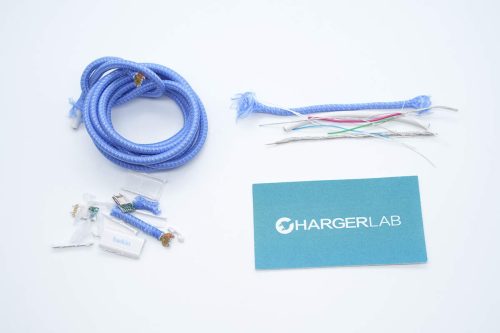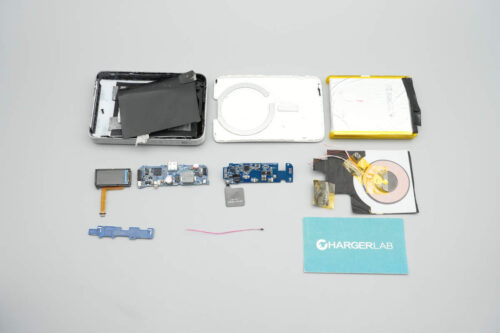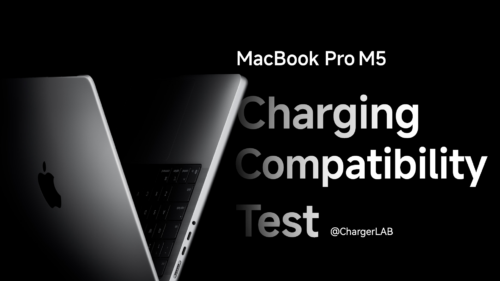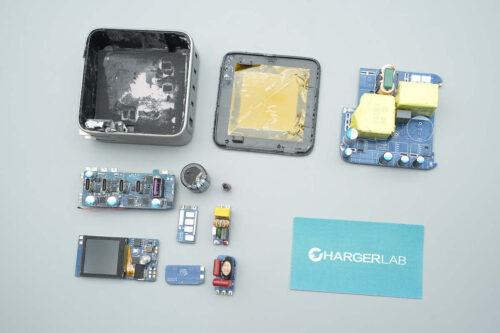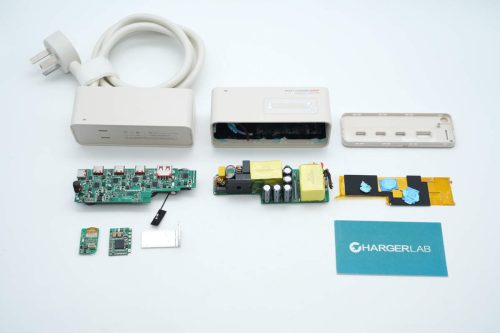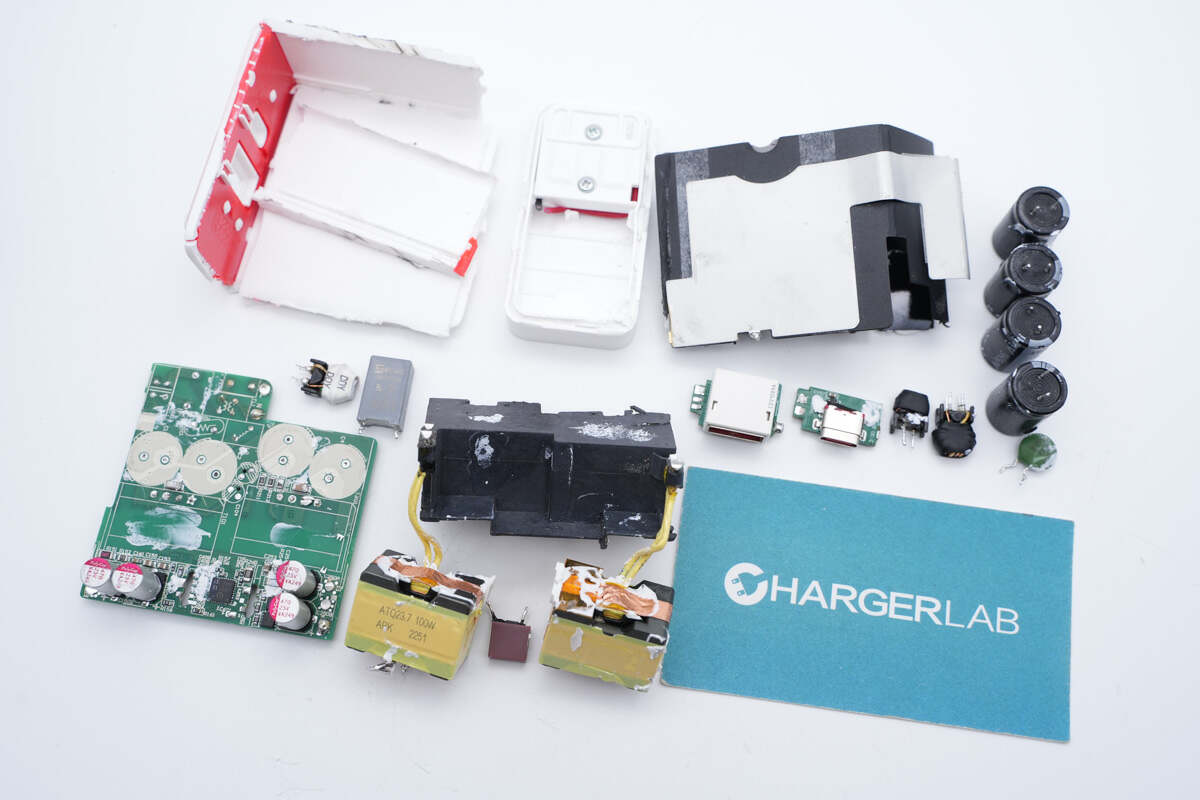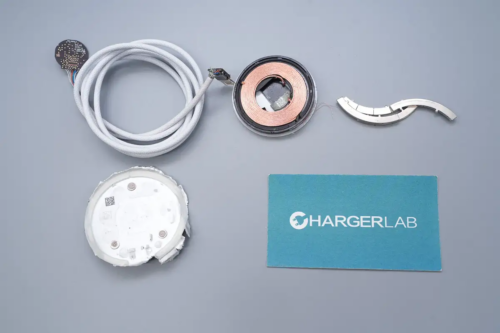Introduction
Well-known brand Belkin has launched a 240W braided cable, available in five color options: green, pink, purple, white, and black. The cable is 1.5 meters long and supports PD 3.1 with up to 240W power delivery. It also features intelligent current regulation to provide over-temperature protection, ensuring stable data transfer and charging performance. Let's now take a closer look at the internal structure and design of this product through the teardown.
Product Appearance
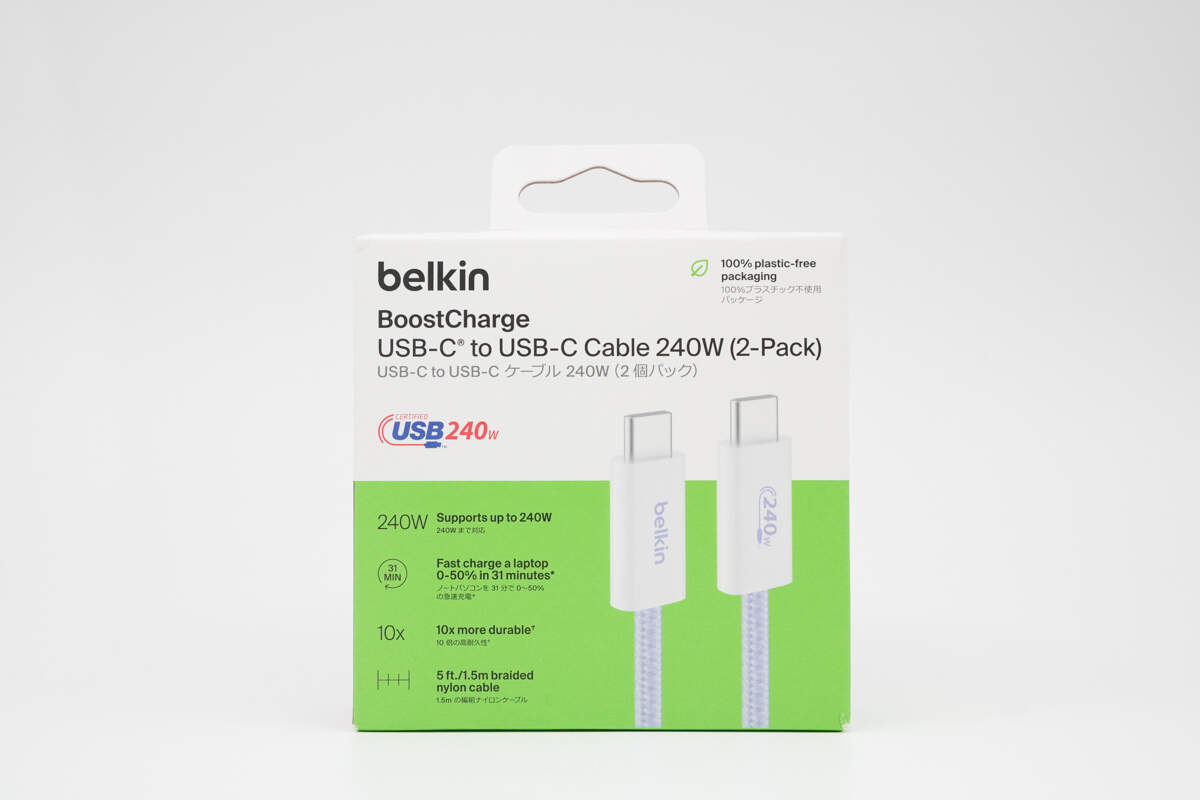
The front of the box features the Belkin logo, the product name, an image of the cable, and key selling points.

The spec info is printed on the back.
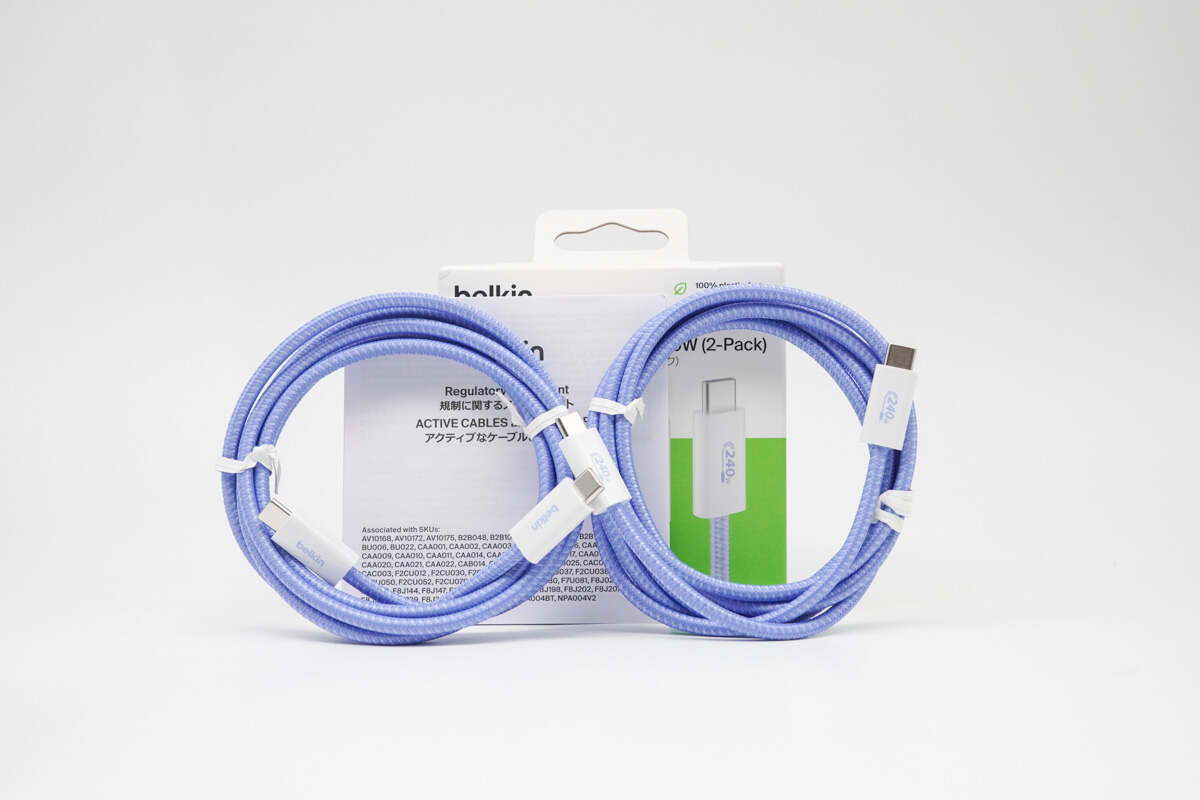
The packaging contains two cables and some documents.
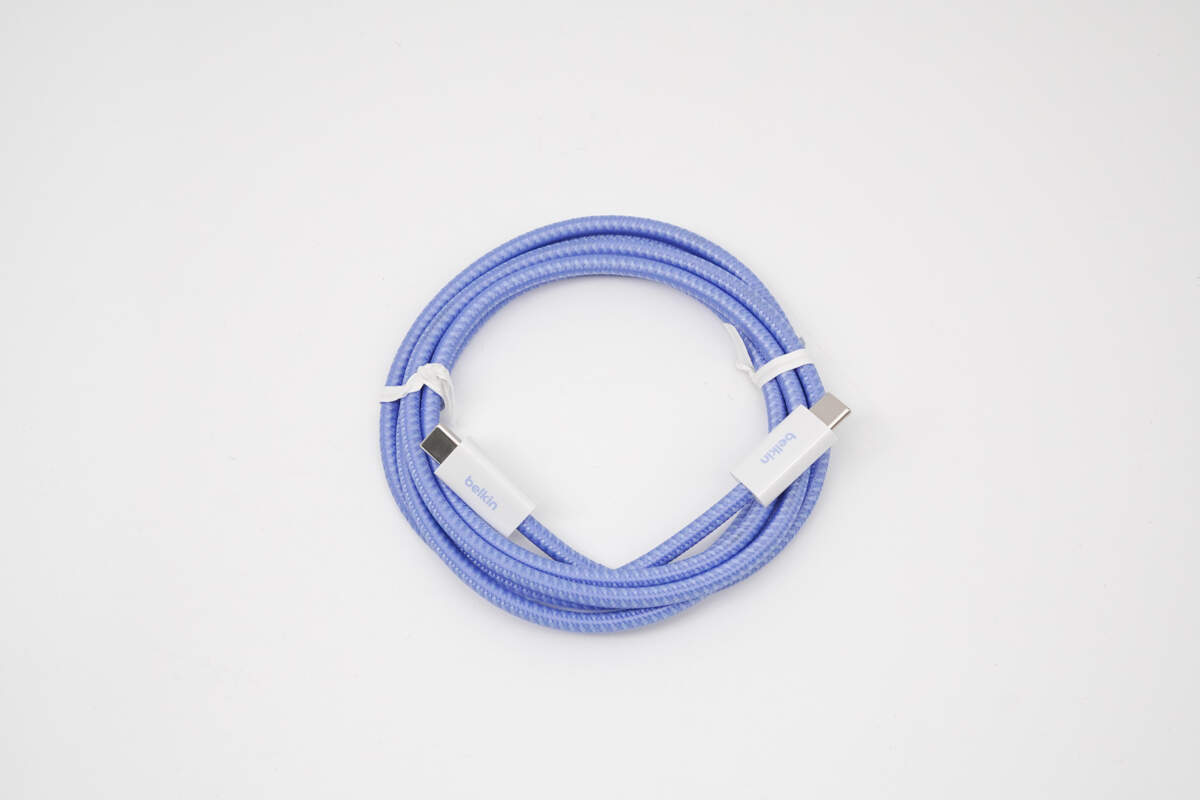
It features a braided design, which makes it more wear-resistant and durable.
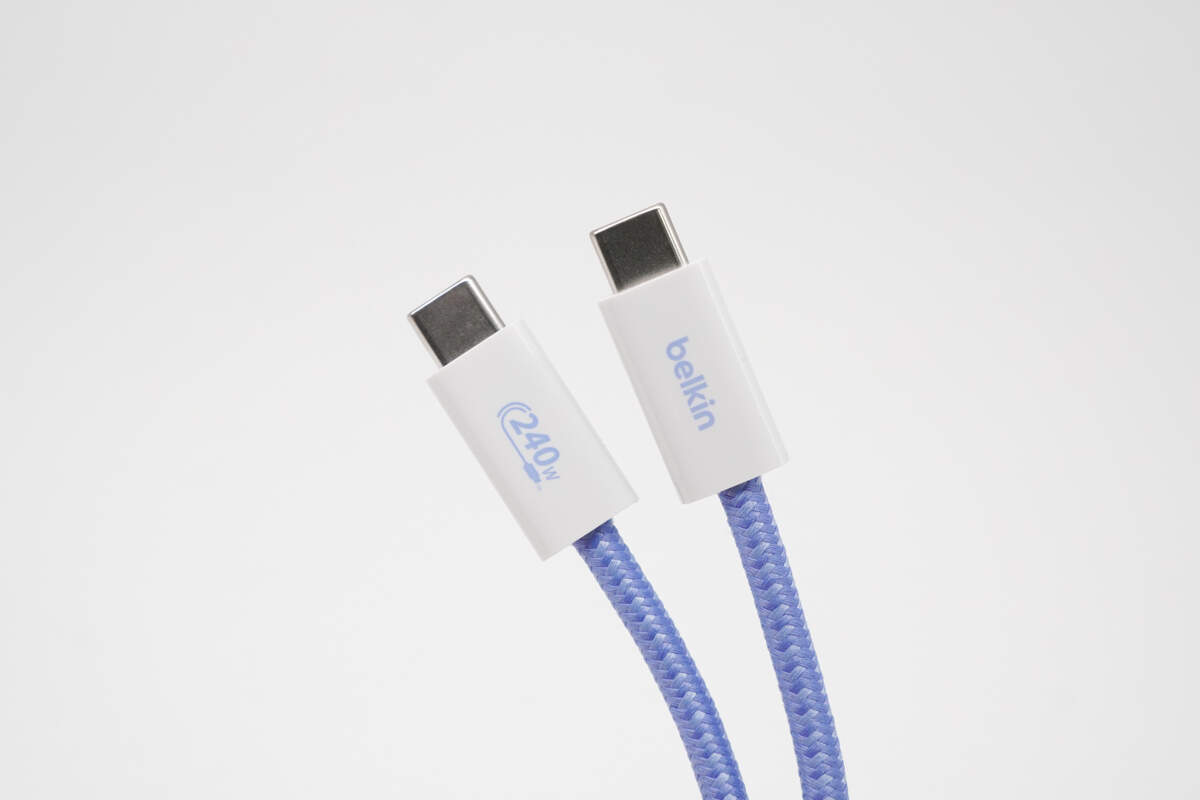
The connectors feature a white casing, with the Belkin logo and "240W" printed on the back side.
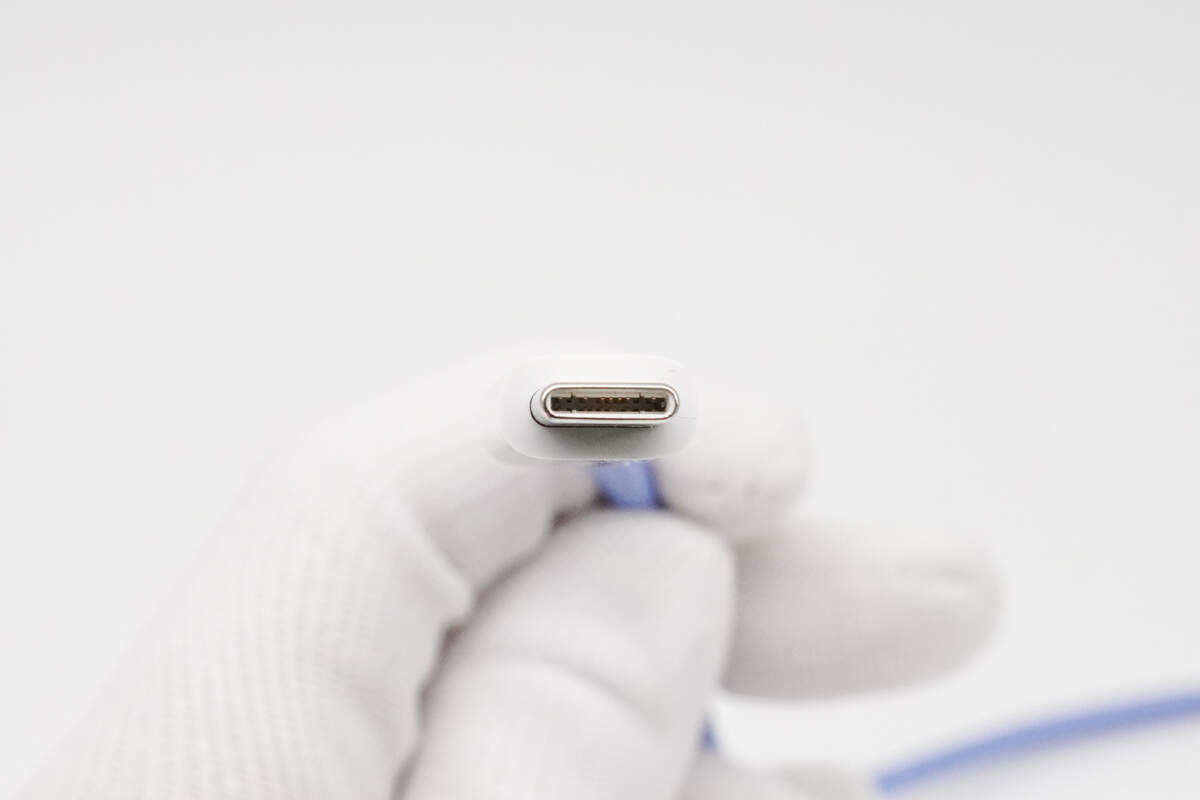
The USB-C connector uses a non-full pin design.

The outer sheath is braided and undergoes a twisting process before braiding, which makes it less prone to fraying or unraveling, while also providing a soft texture.
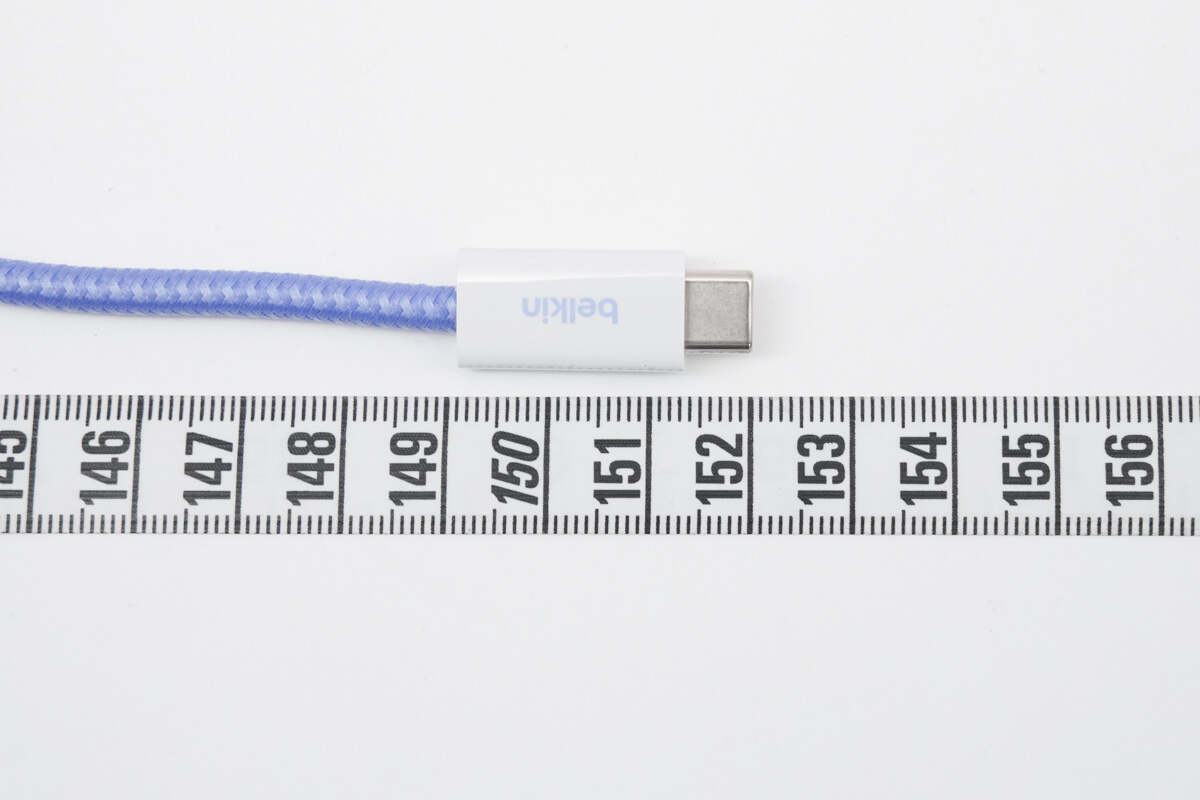
The length of the cable is about 150 cm (59.06 inches).
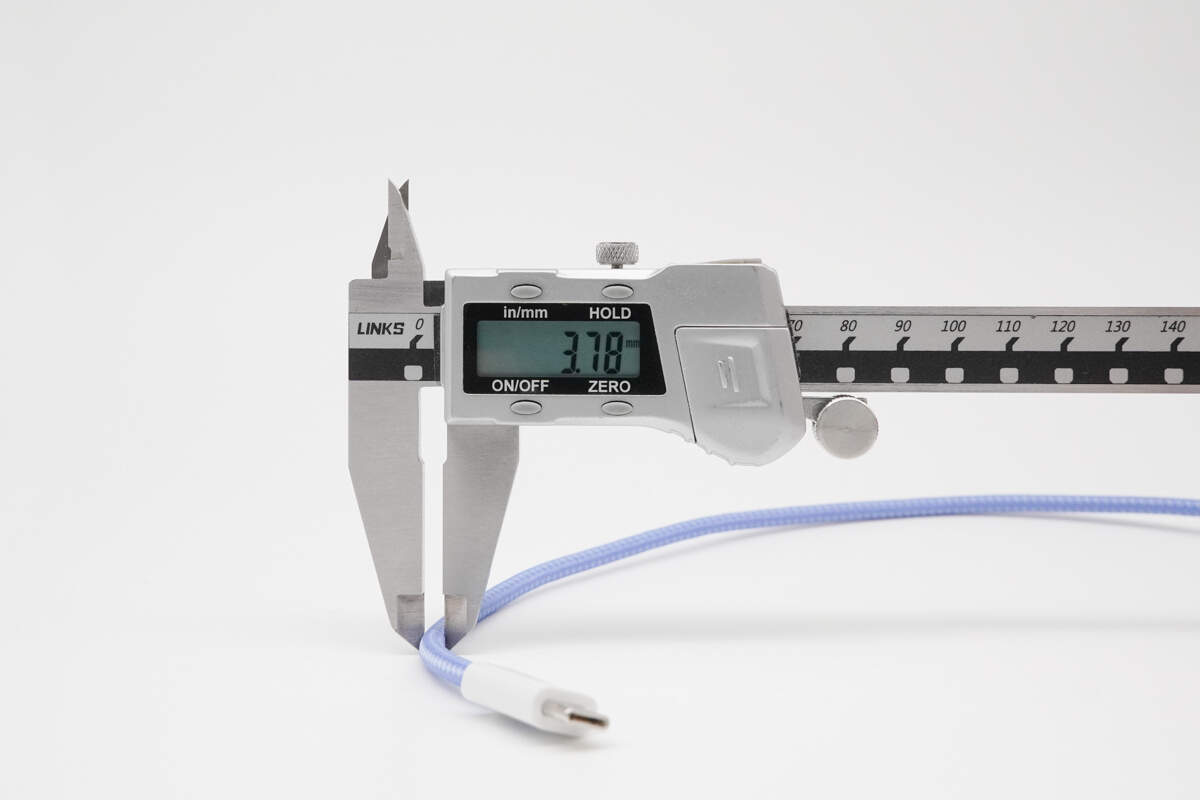
The diameter of the cable is 3.78 mm (0.15 inches).
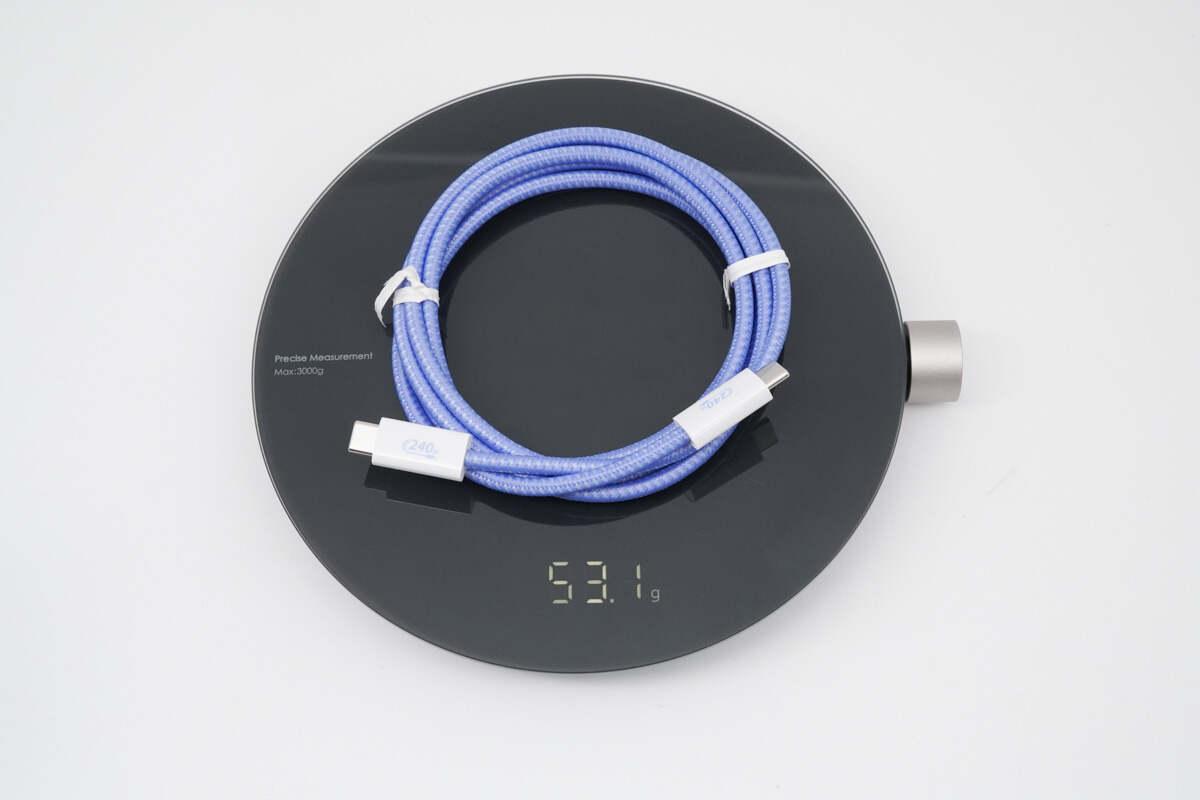
The weight is about 53 g (1.87 oz).
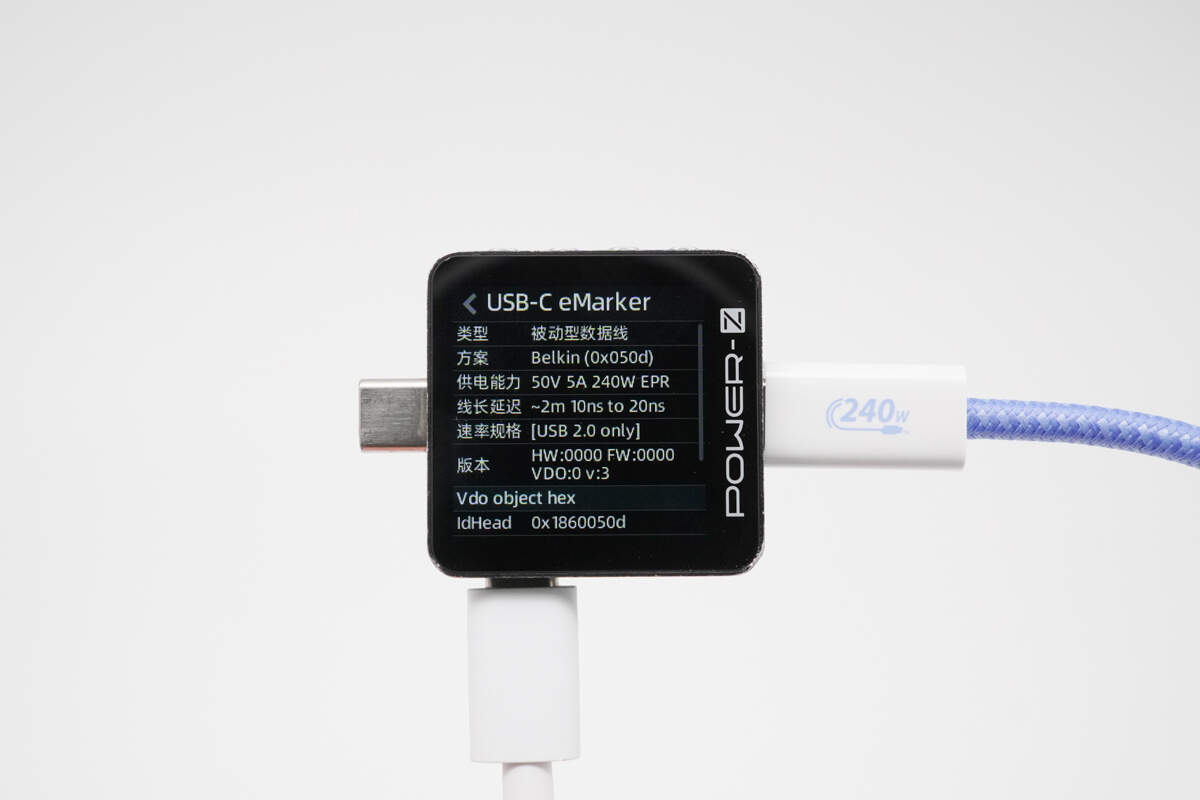
ChargerLAB POWER-Z KM003C shows it has an E-Marker chip. Its power transmission capability is 50V/5A, while its data transfer capability is USB 2.0.
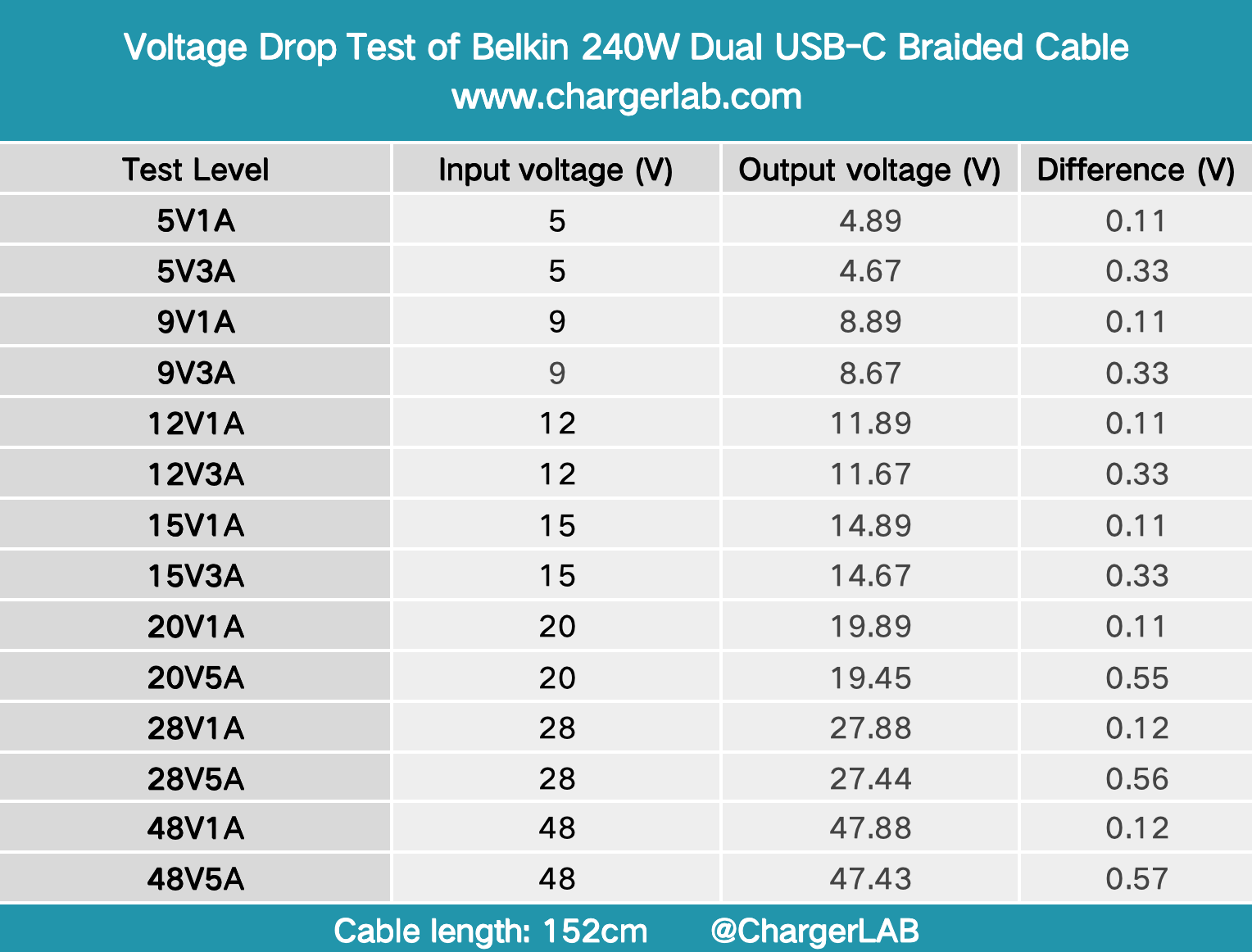
The voltage drop test is carried out below, and the test data results under 14 gears are shown in the table above.
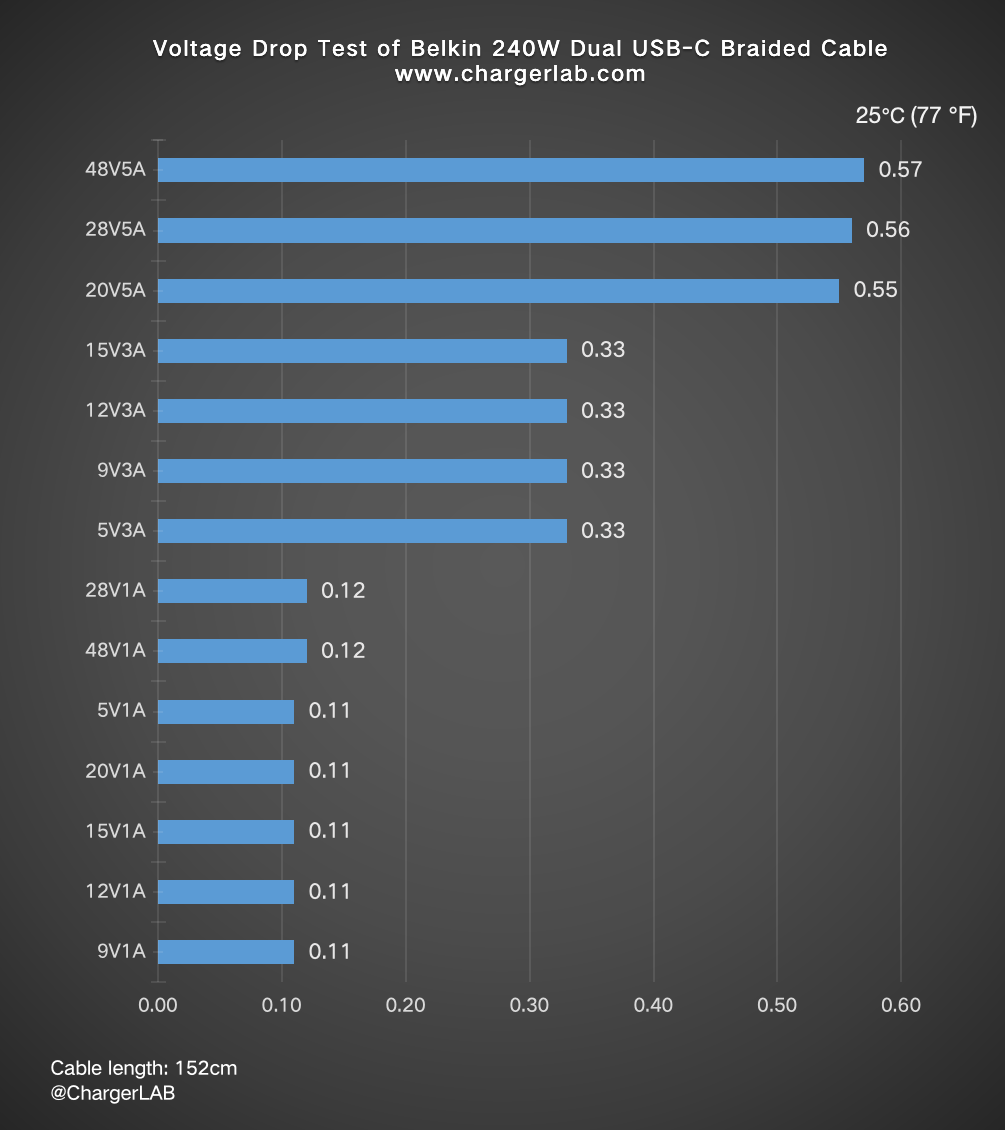
It can be clearly seen that the gear with the largest voltage drop difference is 0.57V at 48V5A, and the gear with the lowest difference is 0.11V at 5/9/12/15/20V1A.
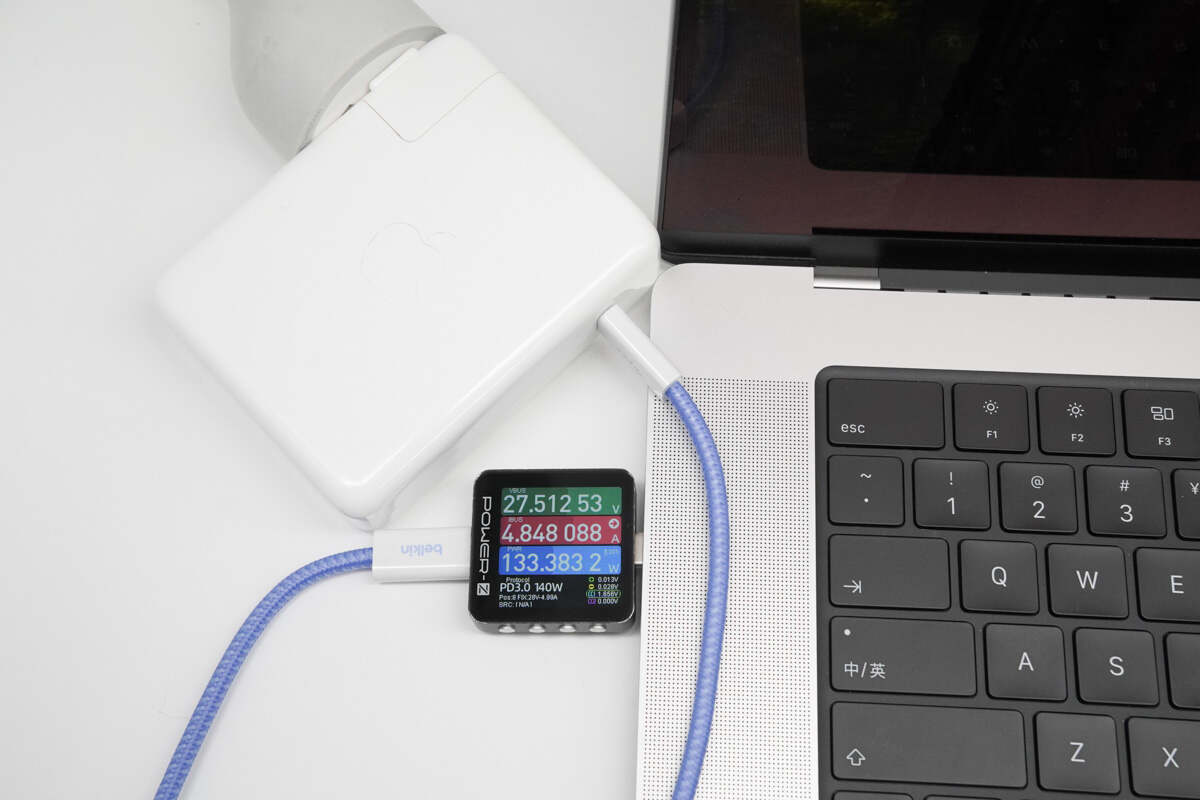
Using the Apple 140W charger along with the Belkin 240W braided cable to charge the MacBook Pro M4 Pro, the input power is about 27.51V, 4.85A, and 133.38W, successfully triggering the PD 3.1 fast charging protocol.
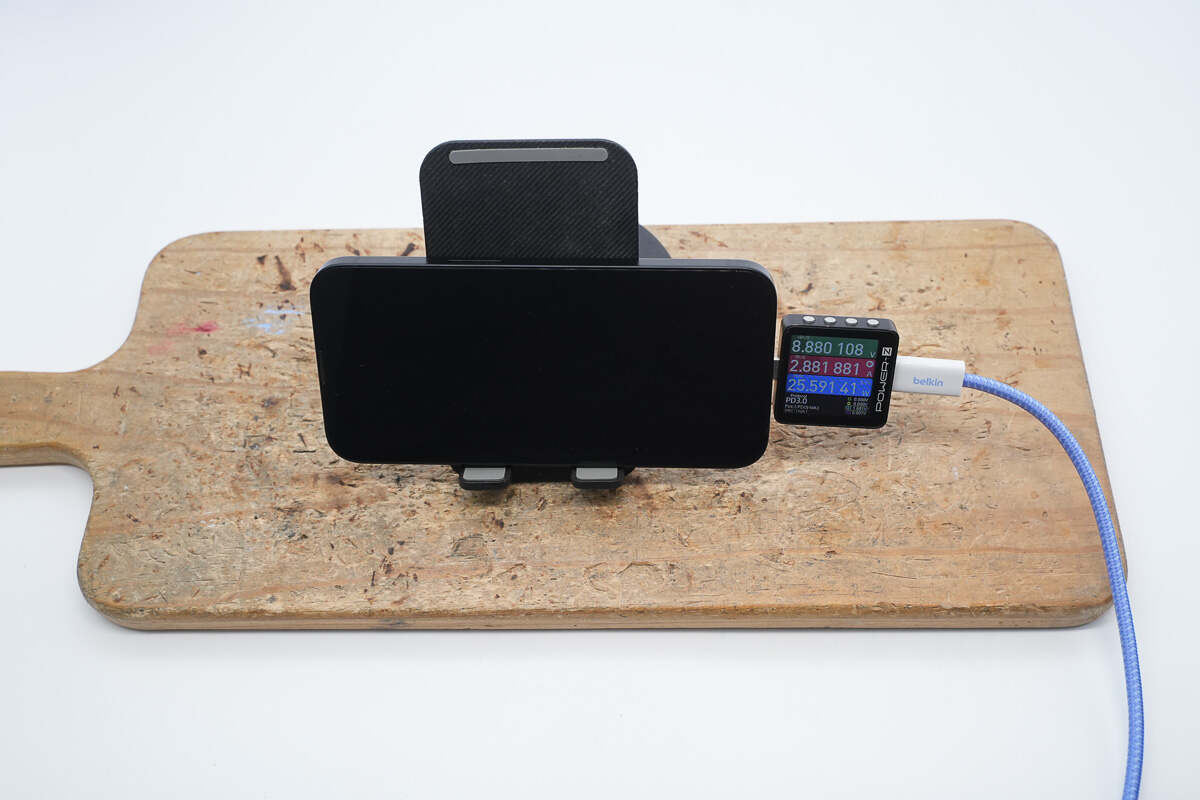
In the over-temperature protection test, under normal room temperature conditions, charging the iPhone 16e resulted in a charging power of approximately 25.59W.
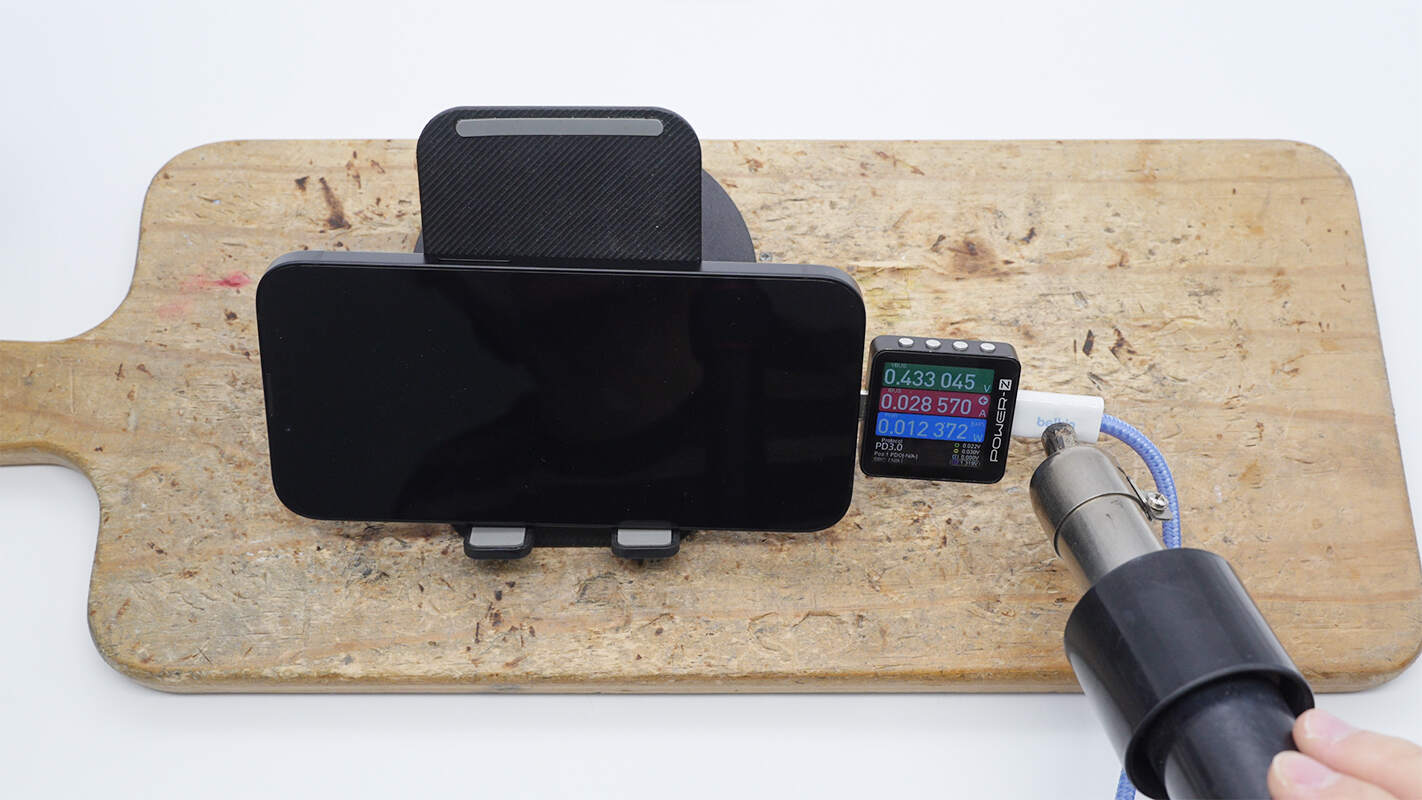
Next, a heat gun was used to apply heat to the cable connector, simulating an overheating issue during charging. As shown in the image, when the connector temperature became too high, the cable successfully triggered its overheat protection mechanism, stopping charging and allowing the temperature to drop. This effectively prevents potential hazards like fires.

The temperature of the heat gun was set to 120°C, and the thermal imaging camera showed that the surface temperature of the connector reached a maximum of 120.2°C (248.36 ℉).
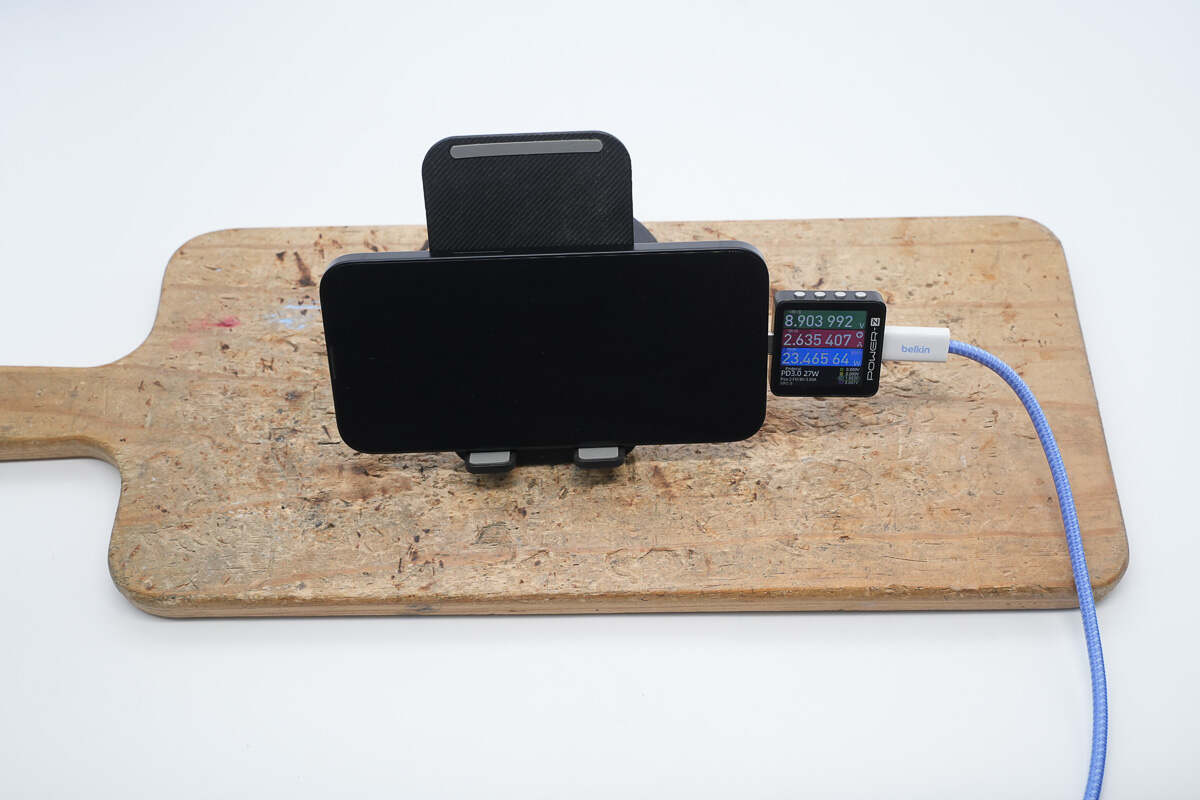
After removing the heat gun and allowing the temperature to drop, the charging test continues. After the overheat protection mechanism is triggered, the Belkin cable still works normally. The charging power measured for the iPhone 16e is 23.47W, with no impact on the charging performance.

Finally, the Belkin cable was used to connect the MacBook Pro 16 M4 Pro and a ZHITAI portable hard drive for a data transfer test.
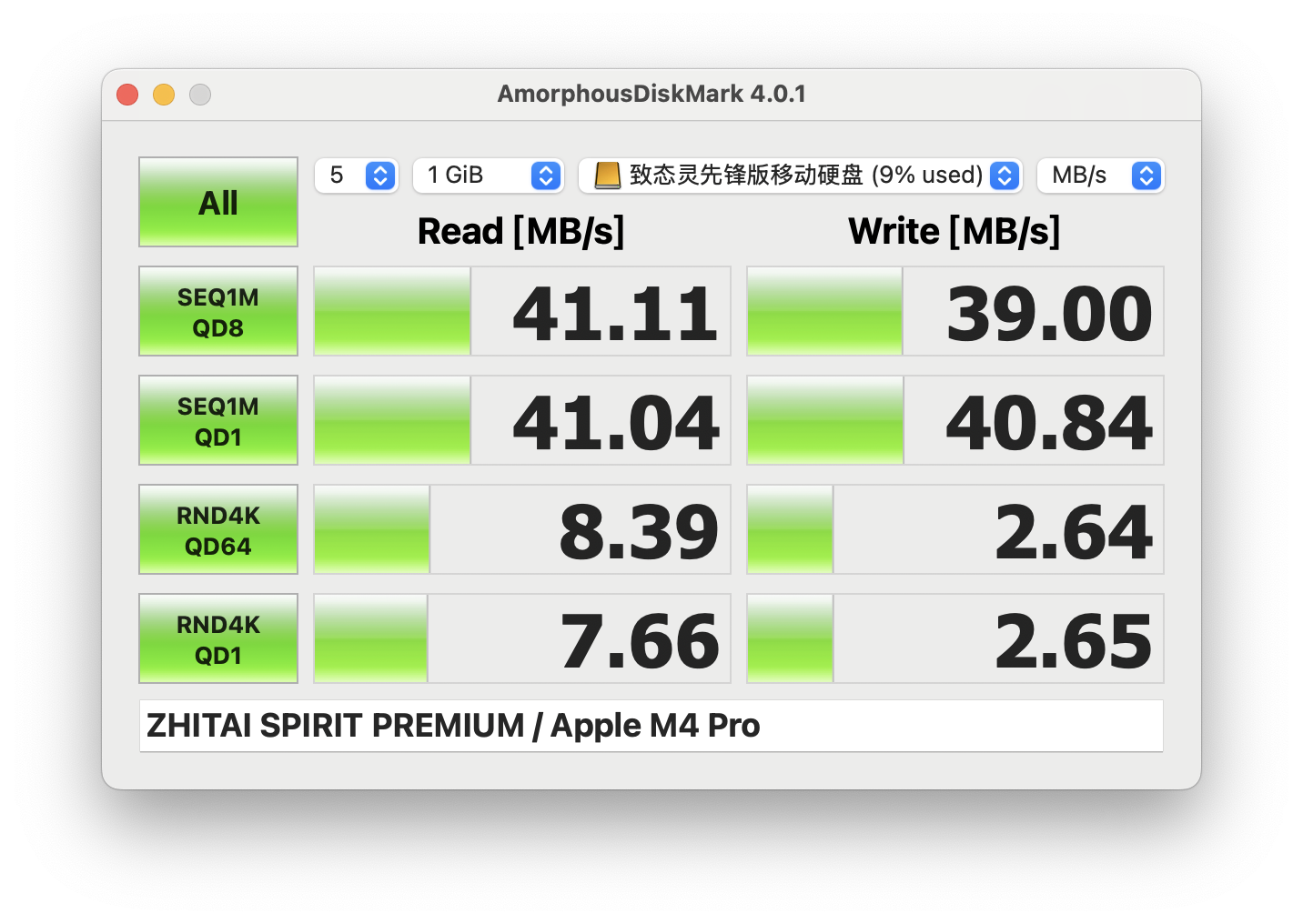
Using AmorphousDiskMark 4.0.1 for read and write tests, the read speed reached a maximum of 41.11MB/s, and the write speed peaked at 39.00MB/s, which aligns with USB 2.0 read/write performance.
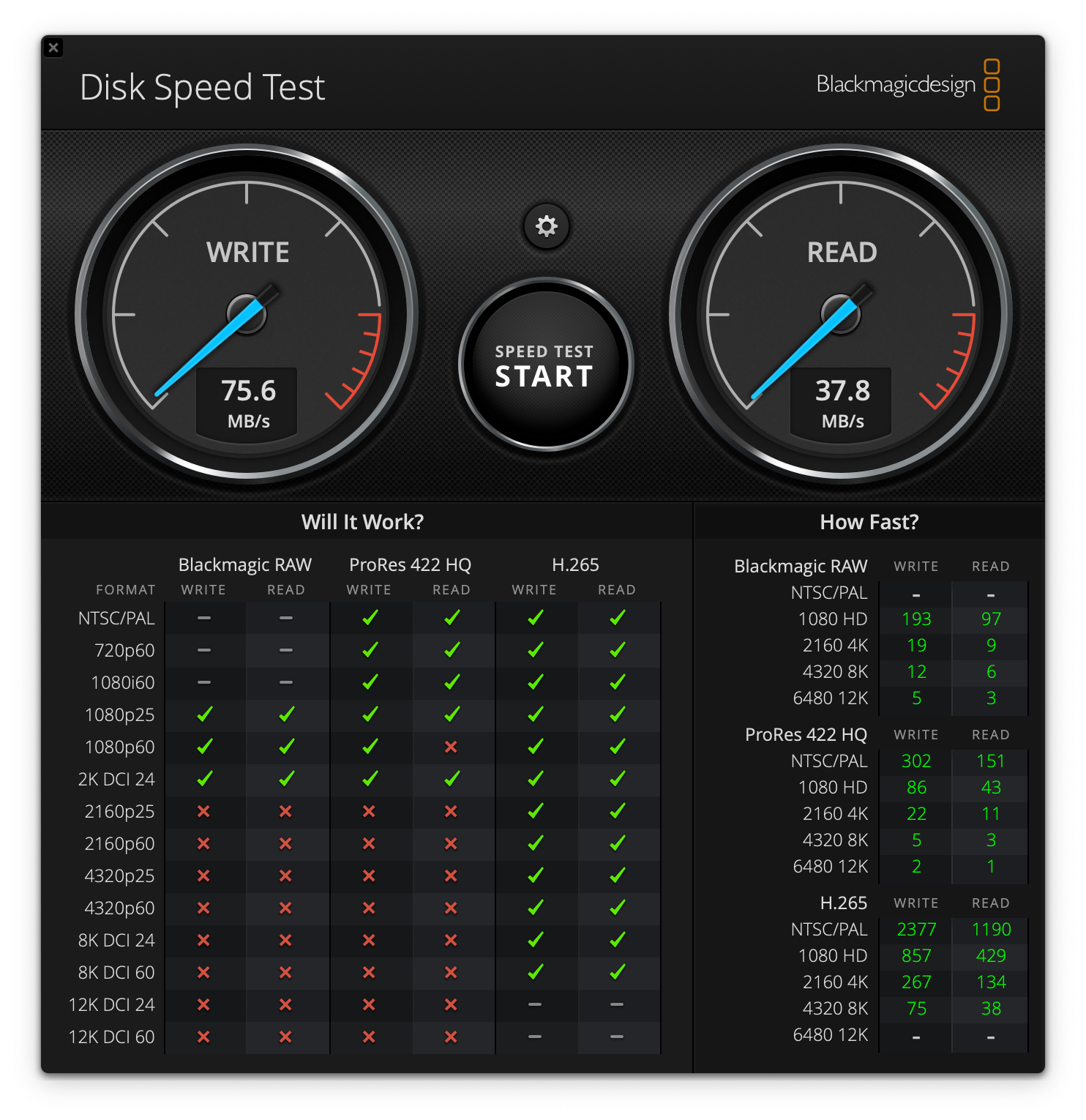
Using Disk Speed Test to measure the transfer speeds, the actual read speed was around 37.8MB/s, and the write speed was approximately 75.6MB/s. These speeds are sufficient to meet the read and write demands of H.265 format videos at 4K and 8K resolutions.
Teardown
Next, let's take it apart to see its internal components and structure.
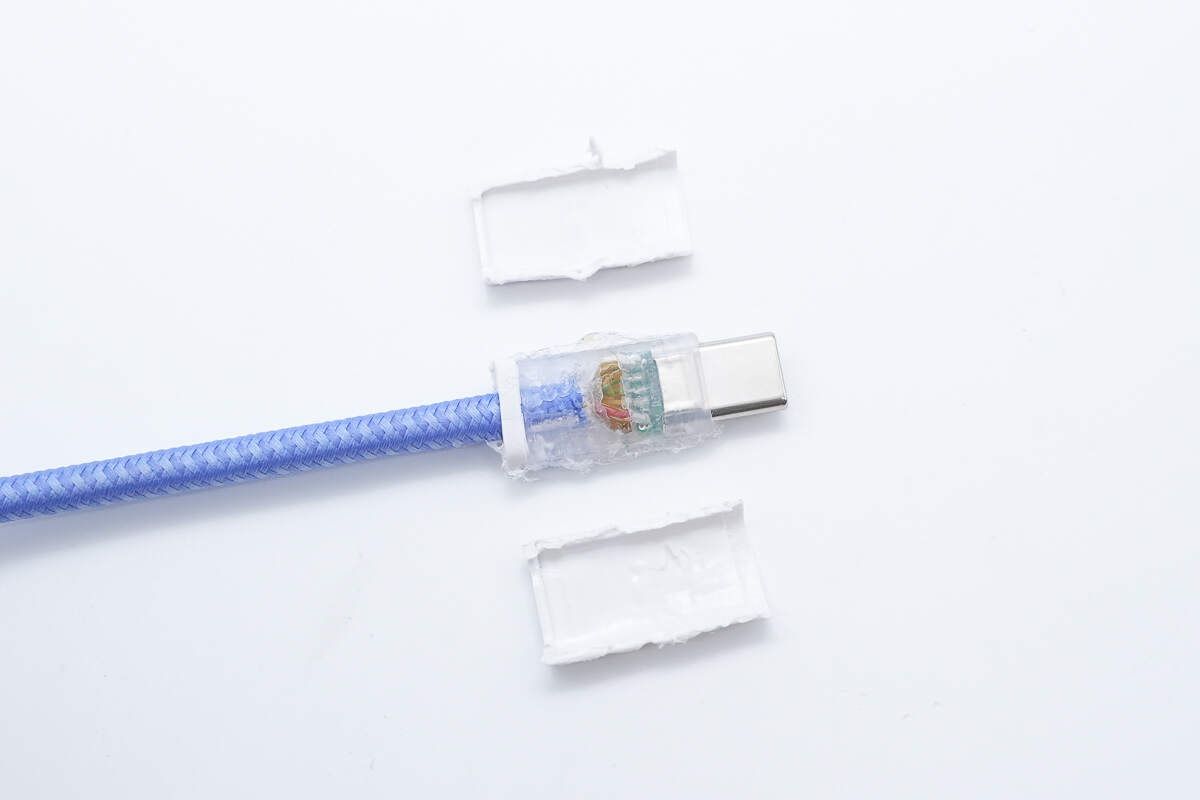
Cutting open the connector casing.
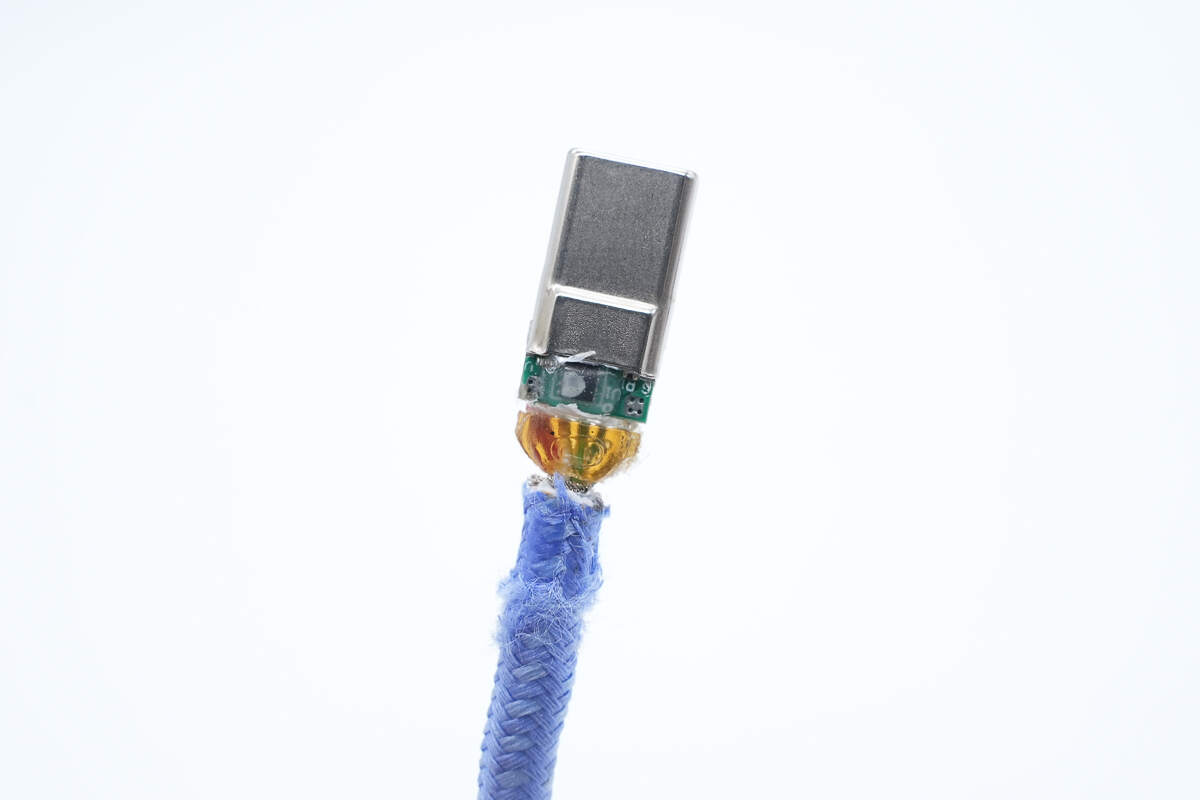
The front of the PCB features an E-Marker chip, which is sealed with adhesive for protection. The wire core is molded into a single piece for added protection.
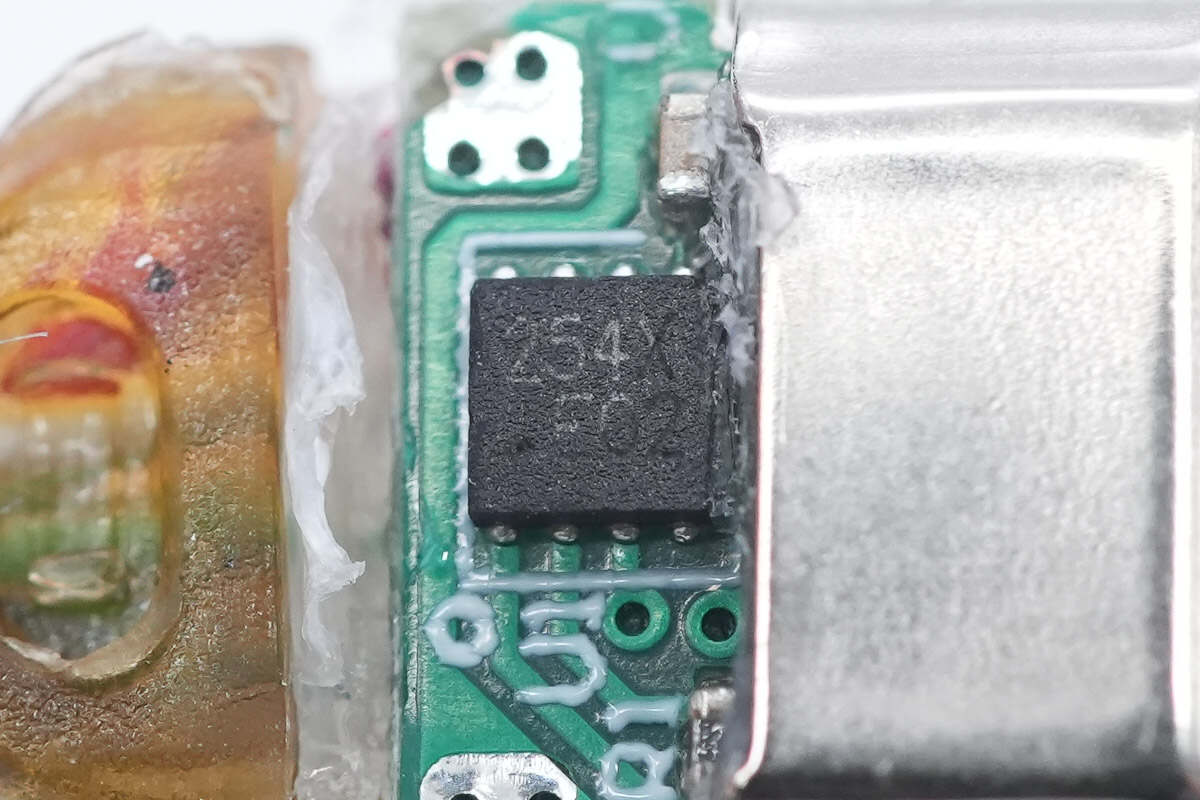
The E-Marker chip is from WCH, model CH254X. This is a USB Type-C cable electronic marker chip that supports temperature protection. It is compatible with the USB Type-C 2.1 standard and USB PD 3.1 standard, and can be used in various Type-C cable applications. The CH254 has passed USB-IF PD3.1 certification, with a TID number of 10502.
The CH254 chip uses an ultra-small DFN package and integrates VCONN diodes, Ra resistors, a VBUS power supply unit, and a high-voltage LDO in a single chip, eliminating the need for external components. Additionally, it comes with default configurations pre-programmed at the factory and supports updating and reprogramming of the chip, connector, or finished cable's configuration data via the Type-C interface.
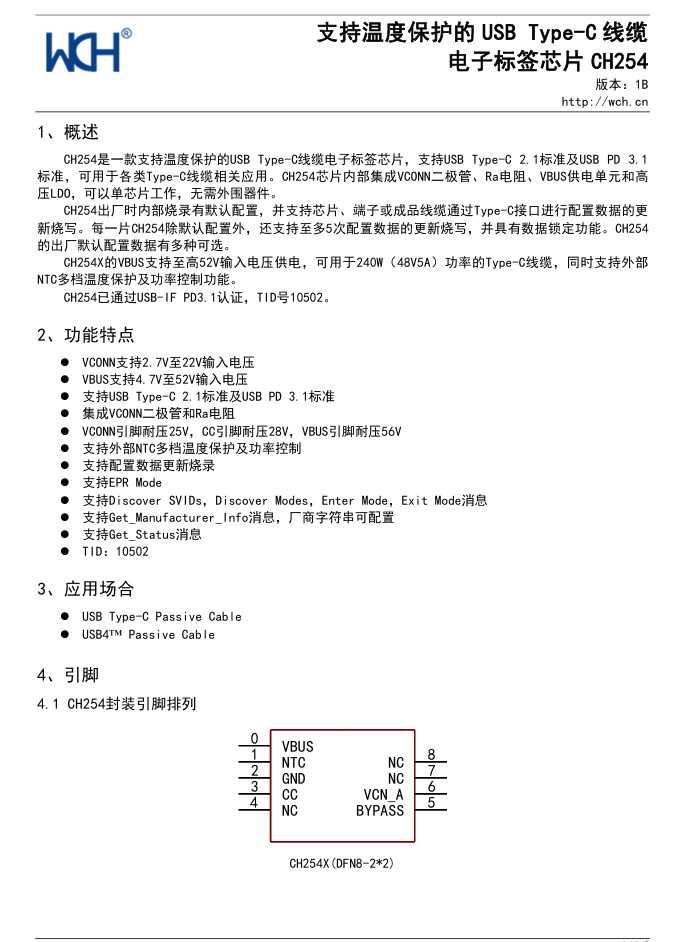
Each CH254 chip, in addition to its default configuration, supports up to 5 updates of configuration data and features a data-locking function. The factory default configuration offers multiple options. The CH254X's VBUS supports a maximum input voltage of 52V, allowing it to power Type-C cables capable of delivering up to 240W (48V 5A). It also supports external NTC multi-stage temperature protection and power control functions.
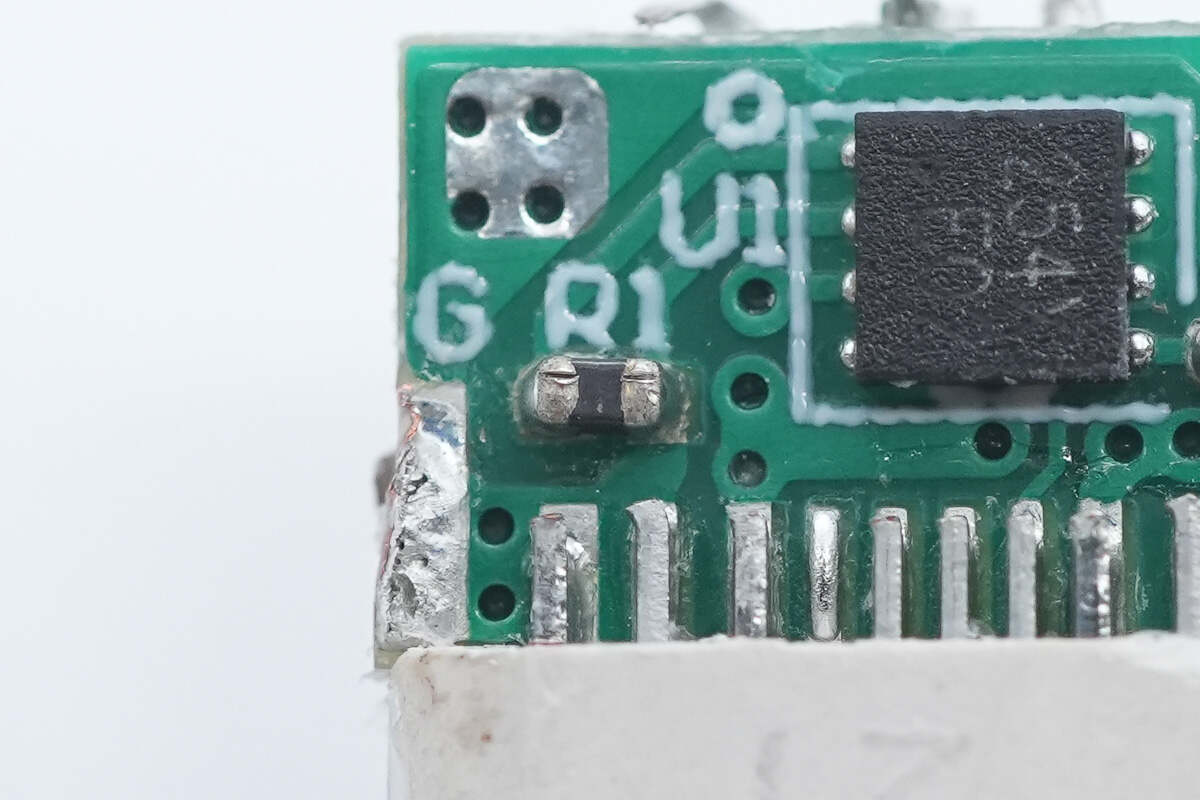
Next to the chip, there is a thermistor. Thanks to the high integration of the WCH CH254X, the external circuitry is very simple. Only a thermistor is needed to implement multi-stage temperature protection and power control functionality.
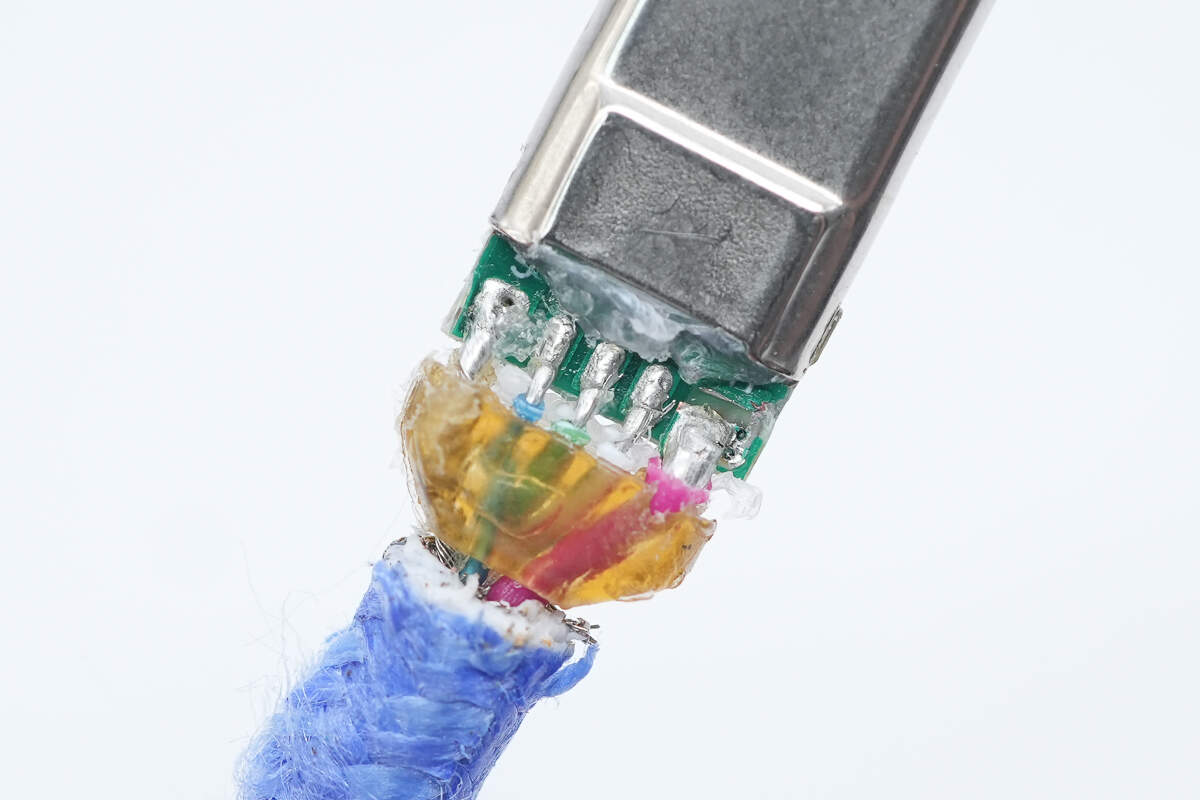
On the other side of the PCB, five wire cores are soldered, and adhesive is applied to enhance the structural strength.

The metal casing is removed, revealing that the pins at the front end are gold-plated.
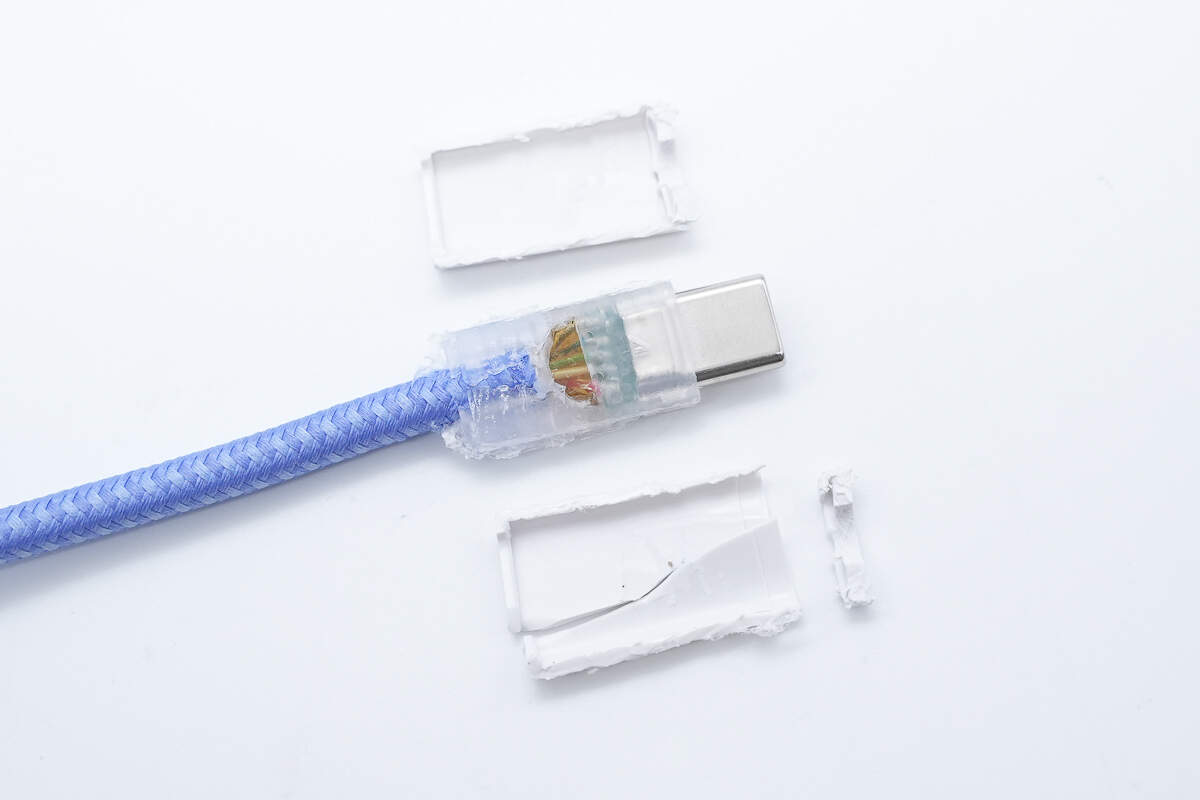
Cut the other connector, and you will find that the interior is the same.
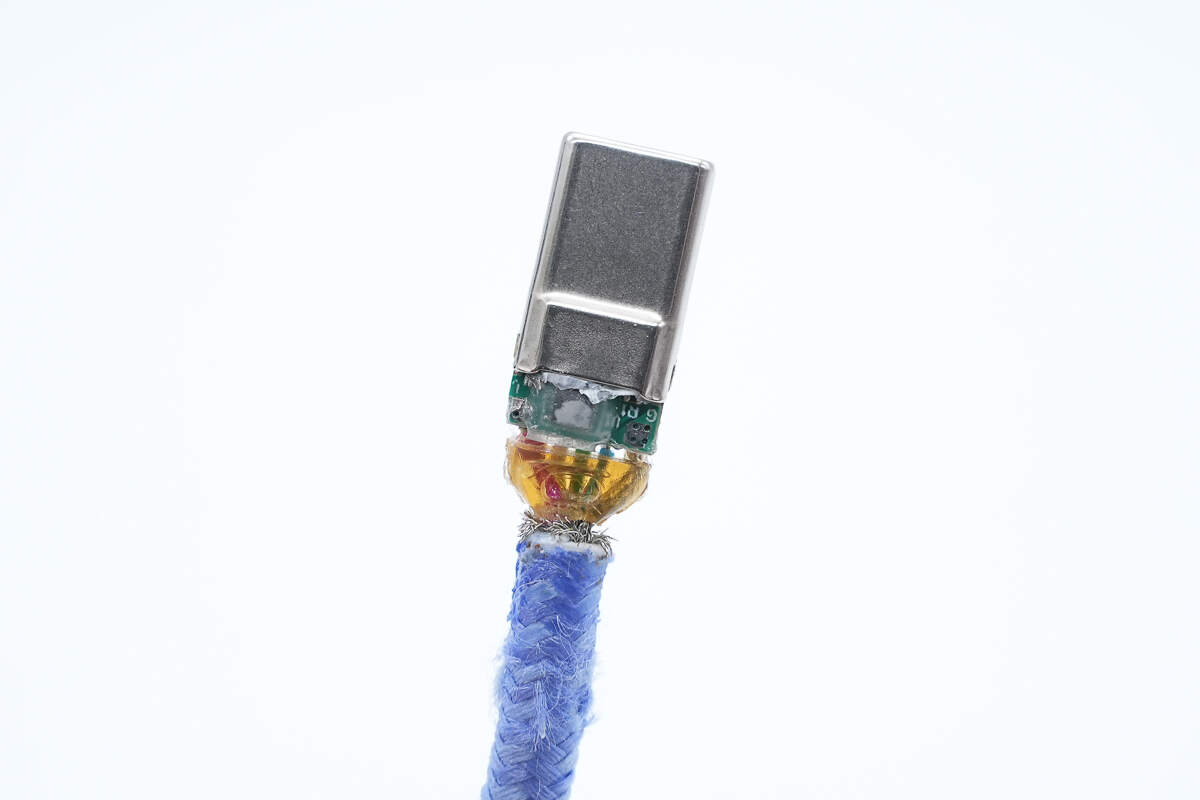
This end's PCB also contains an E-Marker chip as well as an NTC thermistor.
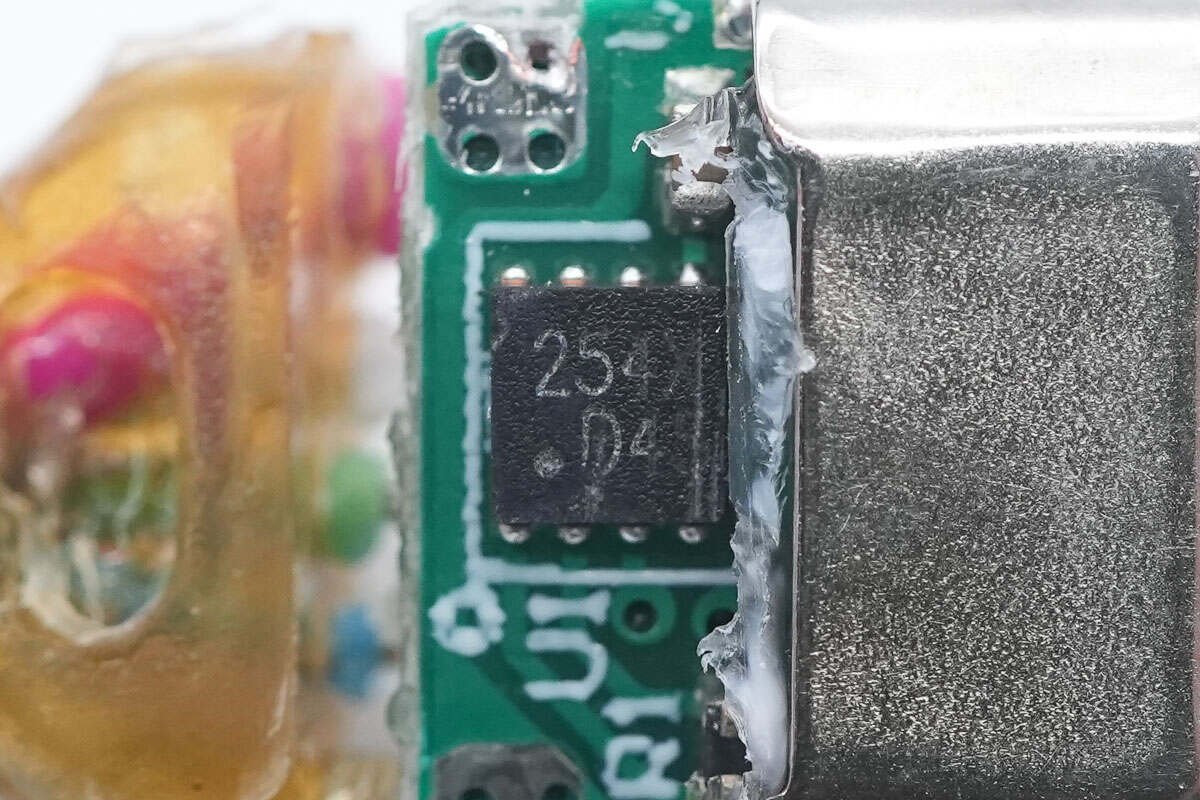
The E-Marker chip on this end is also the WCH CH254X.
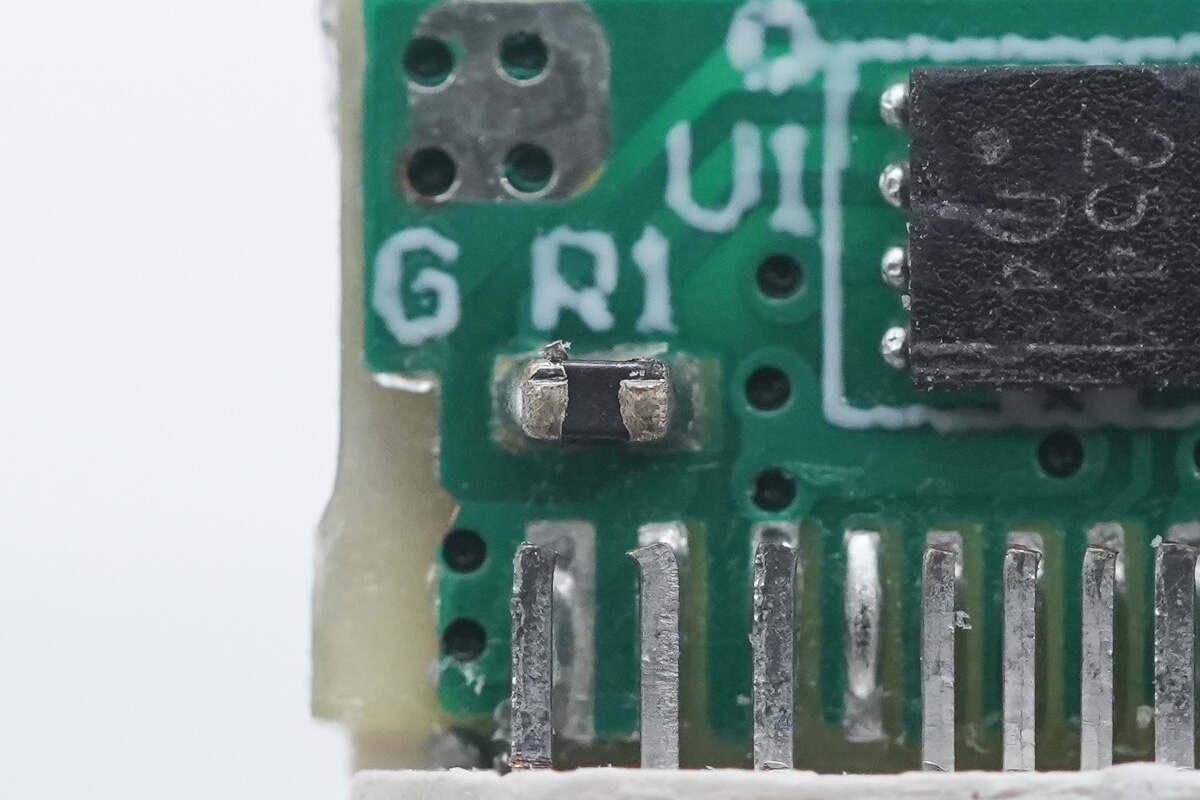
A close-up of the thermistor beside it.

On the other side, five wire cores are soldered.
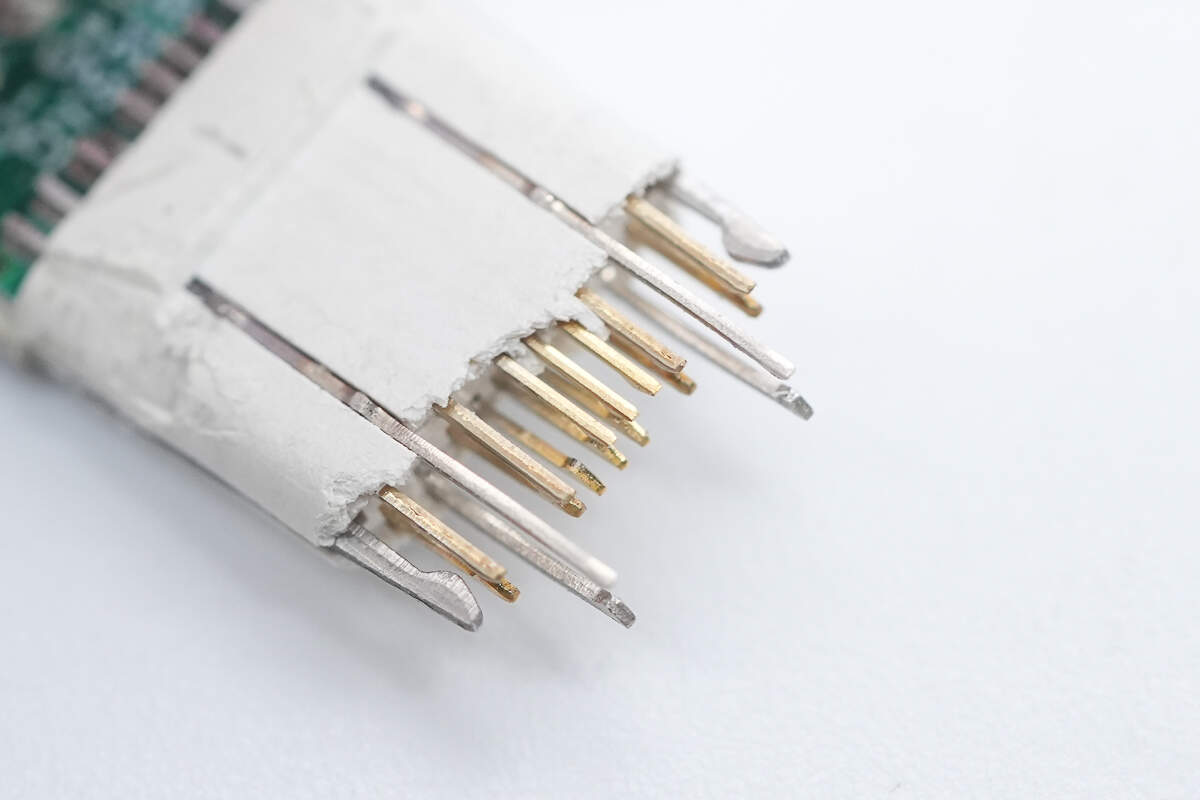
The pins are also gold-plated.

Cutting the cable reveals that the braided sheath hides an internal TPE material, which is not only heat-resistant but also provides a soft, flexible feel.

Beneath the outer sheath, there is a shielding layer for interference protection.
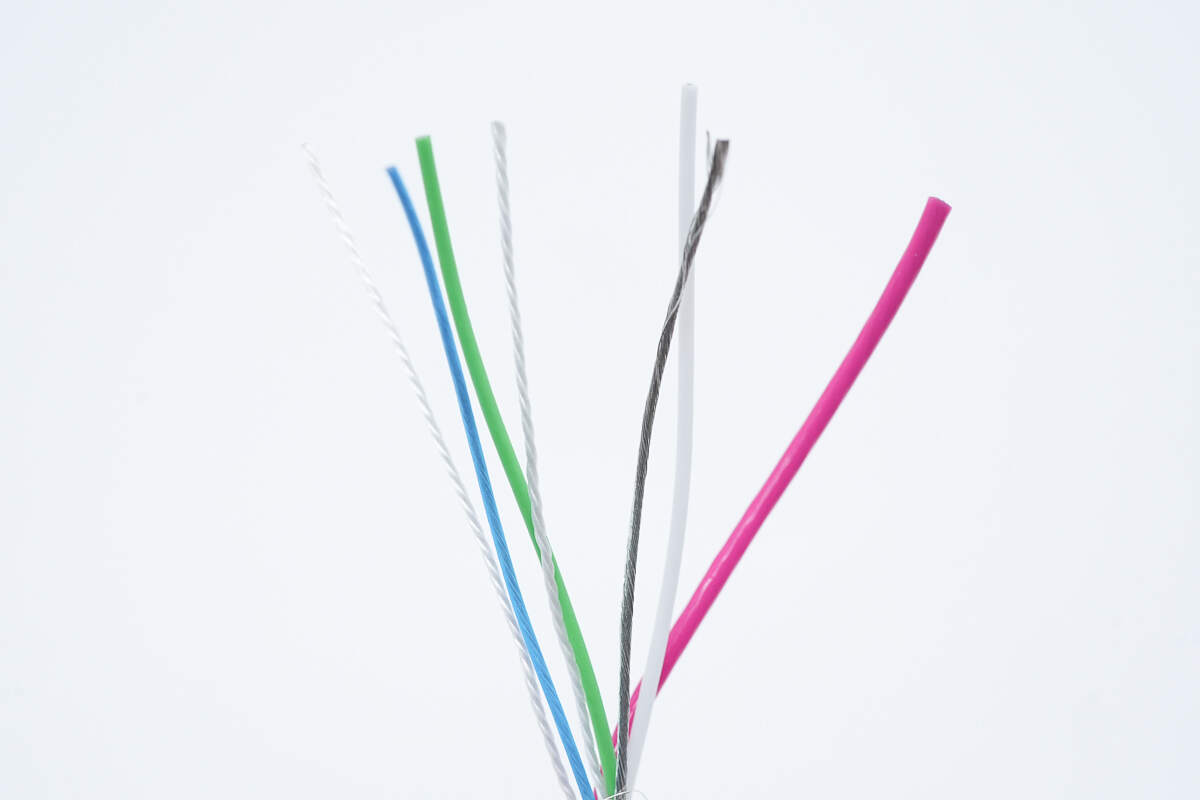
In addition to the five wire cores, there are also two tensile cotton threads inside for added durability and strength.
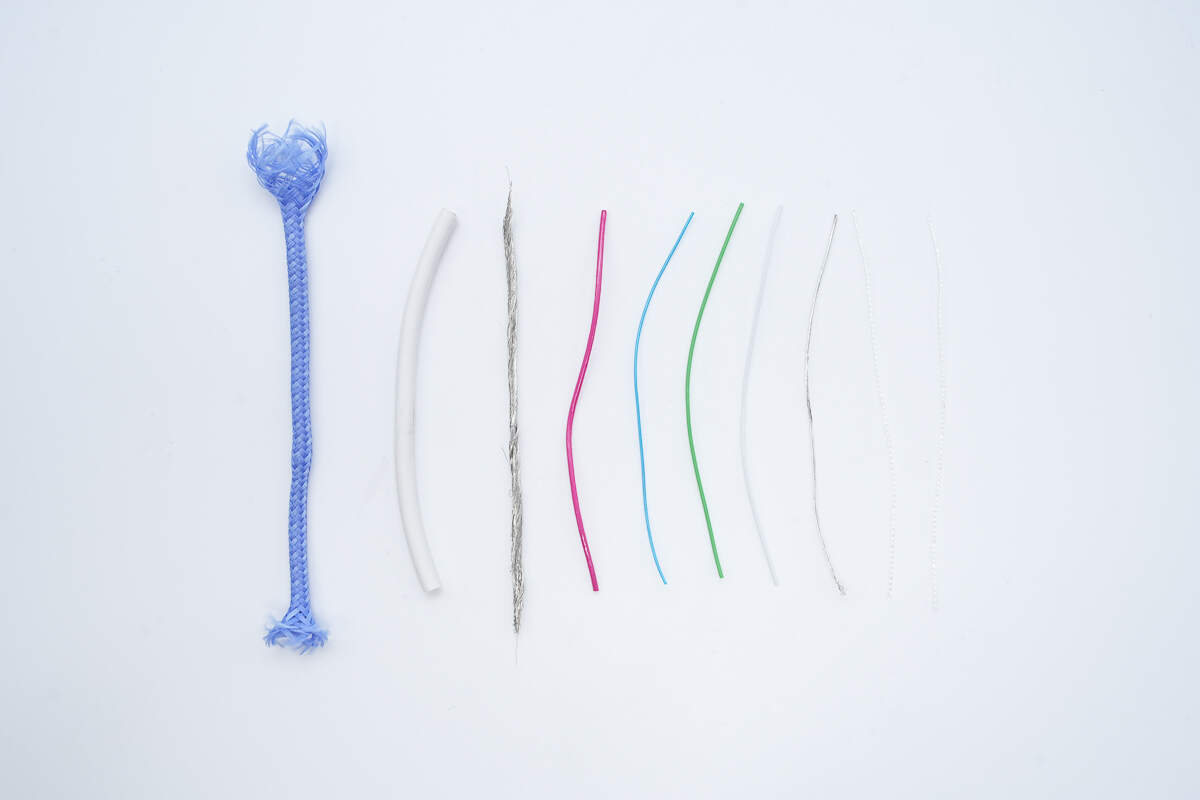
Cut a section of the cable and explain the individual wire cores.
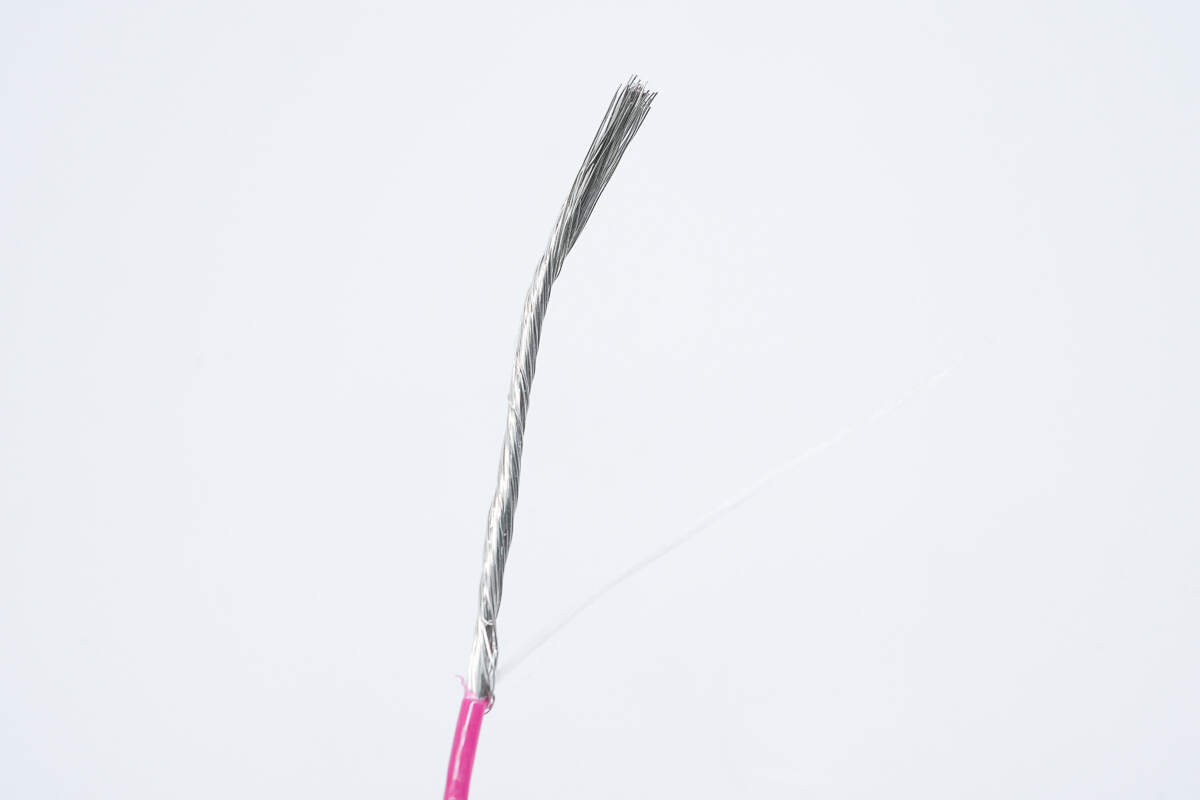
A close-up of the positive power wire core shows that tensile threads are mixed in to enhance its pull-resistance. The other colored wire cores follow the same design.

A close-up of the negative power wire core.
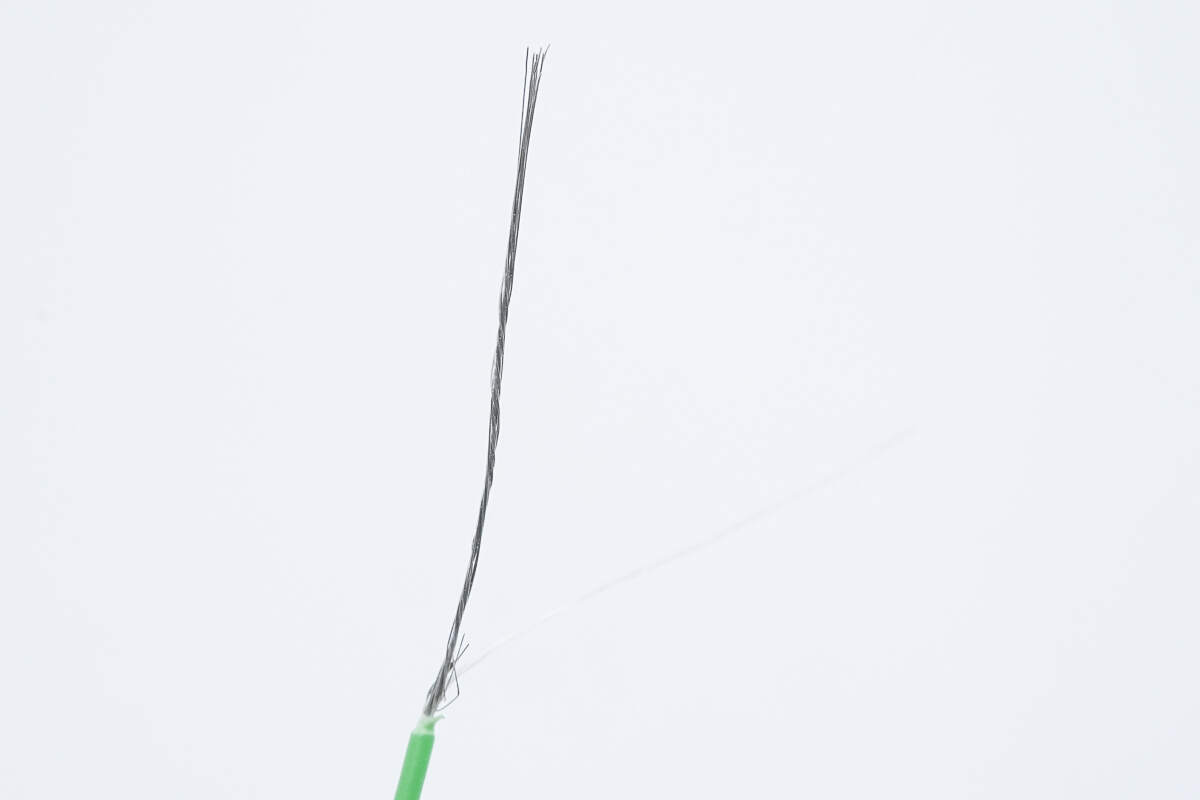
A close-up of the green D+ wire core used for USB 2.0 data transmission.

A close-up of the white D-wire core used for USB 2.0 data transmission.

A close-up of the blue CC wire core.
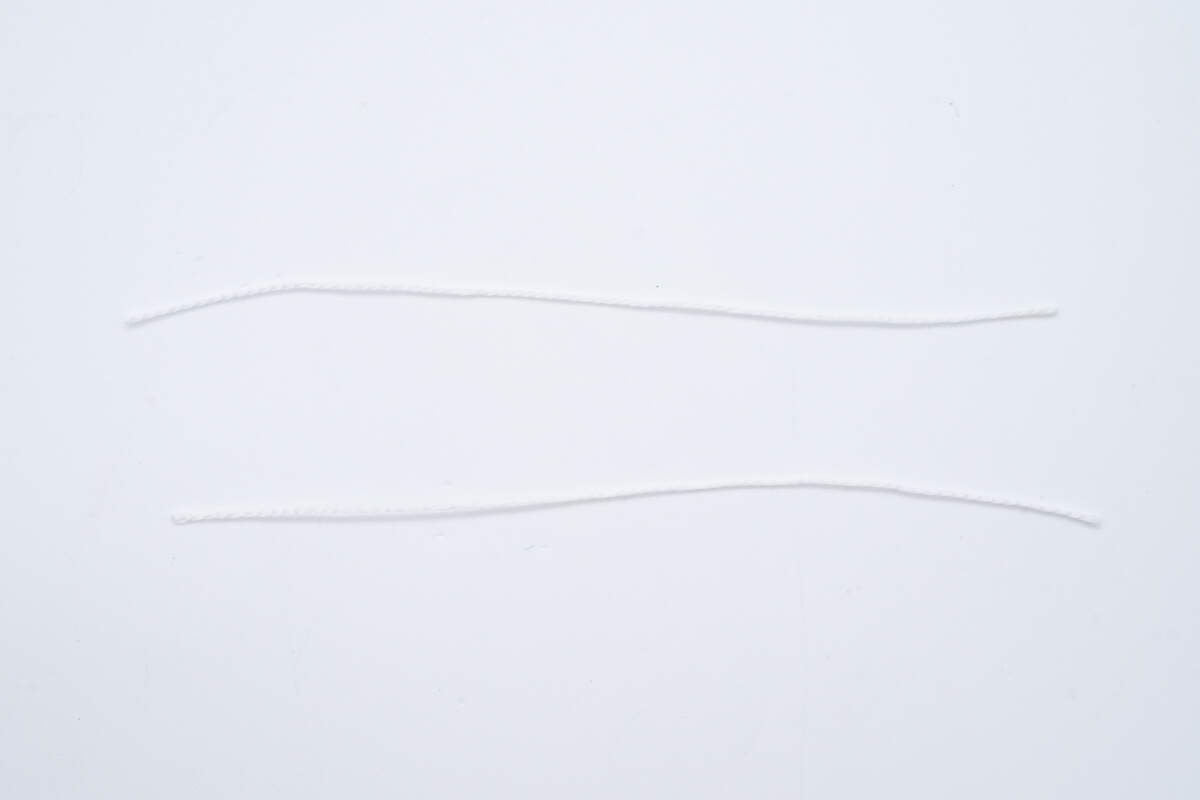
A close-up of the two tensile cotton threads.
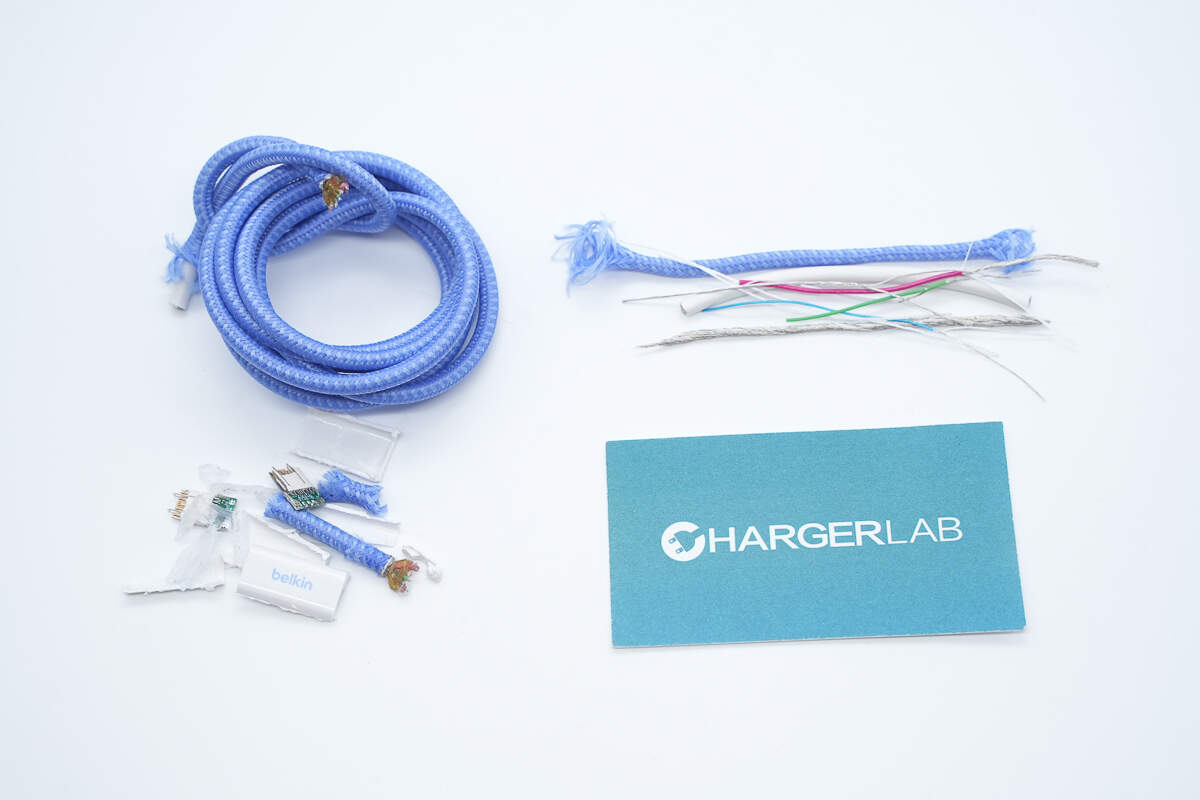
Well, those are all components of the Belkin 240W Dual USB-C Braided Cable.
Summary of ChargerLAB
The Belkin 240W cable features a braided design and offers a variety of color options to suit different preferences. The cable is 1.5 meters long, providing both flexibility and a great tactile feel. It has passed 80,000 bend cycles and 20,000 plug/unplug tests, offering a 1-year warranty for quality assurance. Additionally, it supports 240W fast charging, making it suitable for various devices.
After taking it apart, we found that both ends are equipped with E-Marker chips and thermistors to ensure that over-temperature protection can be triggered from either end. In addition, the PCB, wire cores, and pins are all designed with protective features, and the wire cores are reinforced with tensile threads for added durability.
The cable uses the WCH CH254X solution, and its high integration allows for a design where only these two components— the E-Marker chip and thermistor—are required to achieve a 240W fast charging data cable with over-temperature protection. This design addresses safety concerns related to short circuits, overloads, and cable aging.
Related Articles:
1. Teardown of Lenovo Legion 245W GaN Adapter (LA245)
2. Teardown of DJI Original 240W Power Adapter for Mavic 4 Pro (CDX341-240)
3. Teardown of CUKTECH 30 Charging Station Ultra (TA3005U)

